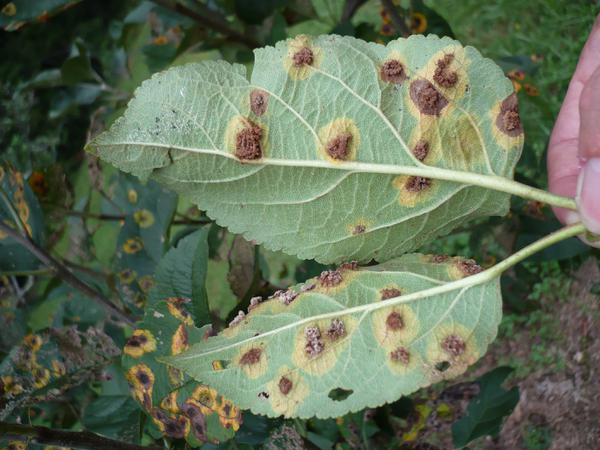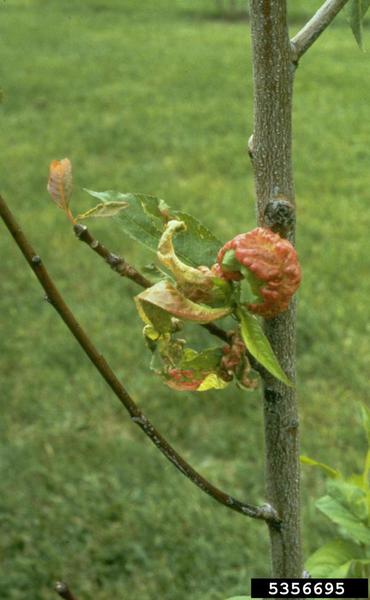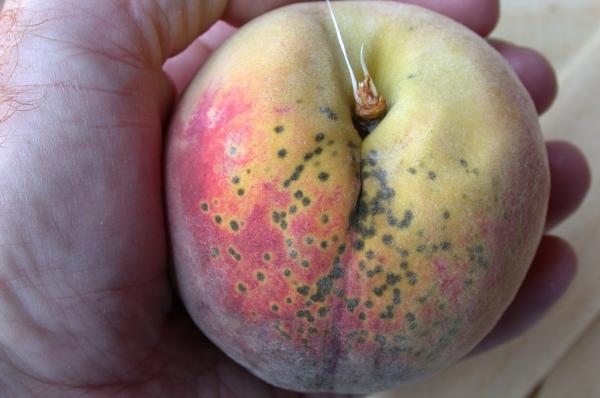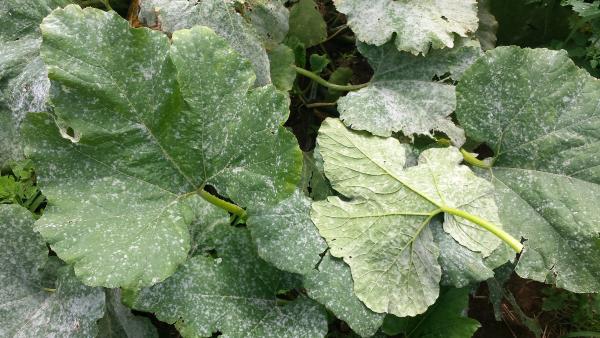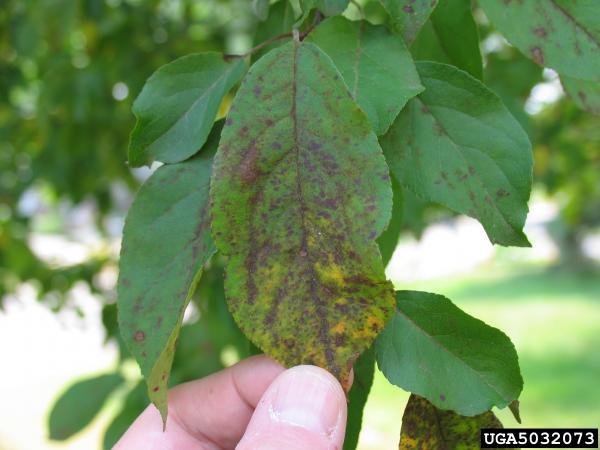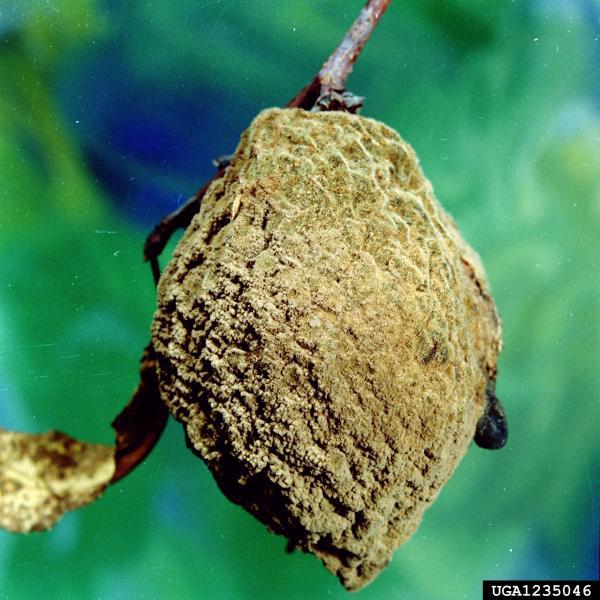Outline
Selecting and Placing Fruit and Nut Trees in a Home Landscape
A Year in the Life of a Deciduous Tree
Winter
Spring
Summer
Fall
Objectives
This chapter teaches people to:
- Select varieties of fruit and nut trees that thrive in specific environmental conditions.
- Select quality sites for planting fruit and nut trees.
- Plant and prune fruit and nut trees.
- Identify and manage common fruit and nut tree pests and diseases.
Introduction
Growing a crisp apple, juicy peach, or a perfect pecan is the dream of many gardeners. Backyard gardeners can grow varieties not available in the market. And unlike commercial producers who must harvest and ship weeks before the fruit is ripe, gardeners can harvest fruit and nuts at their peak. Fruit and nut trees, however, require ample garden space, annual maintenance, and plenty of patience because many do not produce a crop for several years. If properly maintained, fruit and nut trees are productive for many years. This chapter explains some of the challenges and opportunities that gardeners encounter when selecting, planting, and maintaining fruit and nut trees in North Carolina.
Selecting and Placing Fruit and Nut Trees in a Home Landscape
Site Selection
Select the site carefully to ensure your fruit or nut trees will thrive for years to come. Begin by identifying what your site has to offer such a tree. How big a space is available with at least six hours or more of sunlight, and how much of that sunlit space is free from the interference of walls, eaves, sheds, fences, or powerlines? If you have less than 10 square feet, consider a berry bush instead. If you have a 10-to-20-square-foot area, you can grow a self-pollinating dwarf fruit tree, fig, or persimmon. With more than 20 square feet you can grow a self-pollinating apple, pear, peach, or plum tree. Pecan trees require 70 square feet of space. Fruit trees that require cross-pollination need at least twice as much space to accommodate the two or more different varieties needed to get fruit set. If you plant a fruit or nut tree in a space that’s too small, you must prune to contain size rather than to promote fruiting. That kind of pruning will stress the trees, making them more susceptible to insect and disease damage and rarely productive. With limited space, consider trees grafted on dwarfing rootstock, container trees, or espalier trees.
Regional Considerations
More than 200 soil types occur in North Carolina, which stretches 503 miles from the Appalachian Mountains to the Atlantic Coast and ranges in elevation from 6,684 feet on the top of Mount Mitchell to sea level on the beach. Altitude has the greatest influence on climate in North Carolina, and year-round there is a 20-degree difference in temperature between the highest and lowest elevations. November is the driest month, while July is the wettest, and all of North Carolina's rivers are likely to flood. In addition, all areas of the state are subject to wind, hail, and ice damage. Each of these factors affects which fruit and nut trees thrive and what weeds, pests, and diseases present challenges. Because of these considerations, gardeners need region-specific information regarding fruit tree cultivation in North Carolina.
Location
Eastern North Carolina
The NC coastal plain elevation is generally less than 200 feet. Relatively uniform soils of soft sediment occur here, with high sand content (generally referred to as “light soils”), and little or no hard rock near the surface. The NC coastal plain includes the NC tidewater area, which is flat and swampy, and the gently sloping, well-drained interior area.
Where the cold Labrador Current flows between the warm Gulf Stream and the North Carolina coast, the two divergent currents create major storms, causing rain along the coast. Tropical cyclones in the fall can cause severe floods. Temperatures range from 20°F in the winter to 89°F in summer. Average annual rainfall ranges from 40 to 55 inches.
These fruit and nut tree crops are recommended for eastern North Carolina: apples, chestnuts, figs, pears (Asian and European), pecans, persimmons (American and Asian), and plums.
Gardeners must confront several challenges to growing fruit trees in the NC coastal plain. Nematodes are more common in sandy soils; use nematode-resistant GuardianTM rootstock in the light sandy soils of eastern North Carolina. In addition, there are several variety-specific issues with apples. For example, difficult-to-grow varieties, such as ‘Pink Lady’, do not produce good color in the NC coastal plain. In the eastern part of the state, peach tree short life (PTSL) complex causes sudden death of young peach trees in the spring.
Central North Carolina
The NC piedmont has hard rock near the surface, and the elevation rises from 200 feet to 1,500 feet. Elevation changes consist primarily of gently rolling hills. Much of the subsoil in the NC piedmont has high clay content–commonly called “heavy” soil. Floods covering a wide area do occur, most likely in winter. Temperatures range from 10°F in winter to 100°F in summer. Average annual rainfall ranges from 40 to 55 inches.
Recommended fruit and nut tree crops for central North Carolina include apples, chestnuts, figs, pears (Asian and European), pecans, persimmons (American and Asian), and plums. ‘Lovell’ and ‘Halford’ rootstocks work well for peaches in the NC piedmont.
Western North Carolina
The elevation in the NC foothills and mountains ranges from 1,000 to 6,684 feet. The soils consist of eroded, rocky materials, with rocks on the surface. Like the subsoil in the NC piedmont, much of the subsoil in the NC foothills and mountains has high clay content. Temperatures range from 0°F in winter to 80°F in summer. Depending on the location, average annual rainfall ranges from more than 90 inches to less than 37 inches. Flash floods on small streams in the mountains most commonly occur in spring, when thunderstorm rain falls onto saturated or frozen soil.
Recommended fruit and nut tree crops for western North Carolina include apples, chestnuts, pears (Asian and European), and plums.
Temperature
Chilling Hours
In order to bloom and set fruit, deciduous fruit and nut trees require a certain number of winter hours below 45°F. Inadequate chilling can result in little or no fruit. Different types of fruit and different varieties of the same fruit require different numbers of chilling hours. For example, peach trees may require as little as 200 hours to as much as 1,000-plus hours. The lower the chilling-hours requirement, the earlier the tree will begin growing once temperatures are warm enough. In North Carolina, wide fluctuations occur in winter and spring temperatures, and the requirements of low-chilling-hour varieties may be met early in the winter. When that happens, any warm period during the remainder of the winter will cause the tree to bloom prematurely. The next freezing temperature will kill those blossoms. Likewise, varieties that require a high number of chilling hours will suffer if the chilling requirement is not met. Trees will bloom erratically, produce deformed leaves, and have little to no fruit set in the spring. Typically, throughout North Carolina, gardens receive in excess of 1,000 chilling hours annually, so insufficient chilling rarely occurs. To minimize frost and freeze crop losses, plant varieties with a chilling requirement of 750 hours or greater. In North Carolina, varieties with chilling requirements of less than 750 hours suffer frequent crop losses.
Frost
Select species and varieties that are hardy at the lowest temperatures in your yard.
Air Drainage
Cold air is heavier than warm air and thus drains down and settles in low spots at the bottoms of hills. Adequate air drainage is as important as proper water drainage. In North Carolina, spring frosts and freezes are common, and a small difference in elevation can mean the difference between a full crop and no crop at all. For example, a 10-foot difference in elevation may equate to a difference of 1°F during a spring freeze event. Select a higher site with an unobstructed, gradual slope that allows cold air to flow downhill away from the trees. Avoid low sites, which are commonly known as “frost pockets.”
Sunlight
Fruit and nut trees need at least 6 hours of sunlight during the growing season. Avoid areas shaded by taller trees, houses, or buildings. Avoid direct southern exposure because the warmer temperatures on a southern slope can cause early blooming and exposure to frost damage.
Light penetration is essential for flower bud development and optimal fruit set, flavor, color, and quality. Fruit tree buds require direct sunlight to initiate flowers and for high-quality fruit production. Shaded branches do not develop flower buds. Although the exterior of a tree may receive full sun, light penetration is reduced by as much as half just 18 inches into the tree’s canopy. Pruning to allow sunlight into the canopy is essential—both for fruit production and to prevent pest problems.
Soils
Soil consists of minerals, organic matter, air, and water. For more information about soil structure, texture, and profiles, see chapter 1, “Soils and Plant Nutrients.”
Soil Type and Drainage
Fruit trees must be planted in well-drained soil to prevent standing water from drowning the roots. Even though a tree is dormant in the winter, its root system is still growing and it is susceptible to damage from poor drainage. Water standing in the root zone for two to three days could result in tree death. Poorly drained soils also promote the growth of pathogens that infect roots.
When poorly drained soils are difficult to avoid, minimize problems by planting the trees in raised beds or berms. Form beds and berms by shaping well-drained topsoil from the surrounding area. Raised beds should measure 18 inches to 24 inches high and 4 feet to 5 feet wide.
Soil Fertility
To determine fertility needs, collect soil samples for analysis. Detailed directions can be found in chapter 1, “Soils and Plant Nutrients.” Instructions and sample boxes are available through N.C. Cooperative Extension centers. Take soil samples from two depths: the first from the top 6 inches to 8 inches of soil and the second from the lower profile, 16 inches to 18 inches in depth. Samples are analyzed by the NC Department of Agriculture & Consumer Services, which provides a detailed analysis and specific recommendations for improving fertility. A soil pH of approximately 6.0 to 6.5 is optimum for fruit tree growth. North Carolina soils, however, are typically more acidic (lower pH). Follow the directions included with your soil test results to adjust your pH, if recommended, by adding lime to a depth of 16 inches to 18 inches, preferably before planting. Note that in acidic soils, even when nutrients are present, they may be locked up in the soil and unavailable to roots. In this case, additional fertilizer does not benefit the tree but may run off or leach to pollute storm water.
Tree Selection
Whether a fruit or nut tree thrives in a particular location or not depends upon the site’s climate and soil, and the tree’s rootstock and cultivar. Because it is virtually impossible to change the climate or soils, always select cultivars known to thrive in the given conditions. Fruit and nut trees that look promising on the glossy pages of mail-order catalogs are destined to fail if grown in incompatible climates and soils. Climatic conditions and soils vary greatly from one region to another in North Carolina, so the best way to minimize stress and limit pesticide use is to choose plants that are well-adapted to the particular environment.
Another factor to consider when selecting fruit and nut trees is the level of management required. Low-maintenance crops, such as pecans, figs, and persimmons, grow with little attention to training, fertility, or insect and disease management. Conversely, peaches, nectarines, and plums require intensive management.
Table 15–1 lists fruit trees that grow well and produce reliable crops in North Carolina. Table 15–2 includes often-overlooked native fruit crops that grow well in North Carolina. Tree fruits not included on the lists may grow in North Carolina, but few produce quality fruit on a regular basis. Apricot and cherry trees grow in certain areas where the climate is favorable, but need careful management and will not consistently bear fruit. Most tropical fruits do not grow outdoors anywhere in North Carolina. Edible bananas, for example, need a longer growing season to produce fruit and cannot survive North Carolina winters.
Table 15–1. Fruit cultivar recommendations for North Carolina.
| Fruit | Recommended Cultivars | Pollination Notes | Disease Notes | Other Considerations |
|---|---|---|---|---|
|
Apples |
Gala, Ginger Gold, Jonagold, Empire, Red Delicious, Golden Delicious, Crispin (Mutsu), Stayman, Rome, Fuji |
Requirements vary. Some cultivars are self-fruitful. Others require a pollinator.a |
Summer rots are the most serious disease problems and can destroy an entire crop. No cultivars are resistant. Some cultivars are resistant to apple scab, powdery mildew, cedar apple rust or fire blight. These include Redfree, Prima, Priscilla, Jonafree, and Liberty (which performs poorly in North Carolina). | In warmer regions, red cultivars may not color well. |
|
Chestnuts |
Chinese: Nanking, Meiling, Kuling, Abundance, Crane; Chinese-American Hybrid: Revival, Carolina, Willamette | All require pollination from another cultivar. Plant at least two cultivars of the same type to ensure optimal size and production. | Most Chinese and hybrid chestnuts are highly resistant to the chestnut blight fungus. | Many people prefer the hybrid chestnut cultivars, citing superior quality over the Chinese cultivars. |
|
Figs |
Celeste, Brown Turkey, Brunswick/Magnolia (for preserves), Marseille | Only cultivars that do not require pollination can be grown in North Carolina. | Few serious disease problems except nematodes. | Fruit may drop prematurely because of drought or excessive shade, moisture, or fertilization. |
|
Nectarines |
Summer Beaut, Sunglo, Redgold, Flavortop, Fantasia, Carolina Redb | Self-fruitful. Do not require pollination by other cultivars. | Plant nectarines and peaches only on Lovell or Halford rootstocks to avoid premature death. Hairless nectarines are more susceptible to diseases than peaches so require a multipurpose fungicide and insecticide spray program. | Many cultivars were developed in California and may not do well in North Carolina. |
|
Peaches |
Redhaven, Norman, Carolina Belle (white-fleshed), Winblo, Contender, Summer Pearl (white-fleshed), China Pearl, Cresthaven, Encore. Many cultivars were developed for North Carolina by the peach breeding program at NC Stateb | Self-fruitful. Do not require pollination by other cultivars. | Needs a multipurpose fungicide and insecticide spray program during the growing season. | Choose cultivars requiring at least 750 hours of chilling. |
|
Pears |
Moonglow, Magness (not a pollen source), Kieffer, Harrow Delight, Harrow Sweet, Harvest Queen, Seckel | At least two cultivars are recommended to ensure adequate pollination. | Plant only fire blight-resistant cultivars. | Plant pears on higher sites than apples; they bloom earlier. |
|
Pears, Asian |
Twentieth Century (Nijisseiki), Nititaka (pollen source), Shinseiki (New Century), Chojuro | At least two cultivars are needed to ensure adequate pollination. | Fire blight is the biggest concern. | Fruit needs to be thinned heavily. Flower is very susceptible to frost damage. |
|
Pecans |
Type I: Cape Fear, Pawnee; Type II: Type II: Chickasaw, Elliot, Forkert, Gloria Grande, Kiowa, Stuart, Sumner | Pollination requires two cultivars. | Scab is the most serious disease in North Carolina. A fungicide spray program is usually not practical. | Careful cultivar selection is essential to avoid frost or freeze problems and to allow a long enough season for maturation. |
|
Persimmons |
Fuyu, Jiro, Hanagosho (very good pollen source). For North Carolina plant only large-fruited Asian persimmons. | For best fruit set, plant two cultivars. | No serious disease problems. | Fruits of non-astringent cultivars may only be suitable for eating when fully mature and flesh is soft. |
|
Plums |
Japanese: Methley (self-fruitful), Byrongold, Burbank, Ozark Premier (may bloom early); European: Bluefre, Stanley, Shropshire (Damson)b | Some cultivars are self-fruitful, but planting two cultivars is recommended. | Needs a multipurpose fungicide-insecticide spray program during the growing season. | Select later-blooming cultivars to avoid damaging temperatures. |
| a Apple pollination requirements vary with cultivar. For cultivars requiring cross-pollination, plant at least two cultivars with overlapping bloom periods. For self-fruitful cultivars, pollination by another cultivar will increase yield and quality. | ||||
| b Peaches, nectarines, and plums have a chilling requirement: a certain number of hours in temperatures in the 40°F range during the dormant season to break bud and grow properly in spring. In North Carolina, select cultivars with chilling requirements of at least 750 hours to prevent trees from blooming too early in the spring, which risks frost/freeze damage and resultant crop loss. | ||||
Table 15–2. Tree fruits and nuts native to North Carolina.*
| Fruit | Varieties | Advantages | Disadvantages |
|---|---|---|---|
|
American persimmon |
C-100, Killen, Meader, Morris Burton, Prok | Tough tree; grows in a variety of locations | Wild trees are either male or female and thus usually not self-pollinating. |
| Chinquapin Castanea pumila (Figure 15–12) |
Fuller, Rush | Grows more like a shrub than a tree; a good producer of sweet nuts reminiscent of American chestnut | Nuts are covered in prickly burrs that can be a nuisance; birds and small mammals love them; somewhat difficult to harvest; susceptible to problems that attack chestnut trees. |
| Mulberry, Red Morus rubra (Figure 15–13) |
Collier, Hicks Everbearing, Illinois Everbearing, Silk Hope, Townsend, Travis | Tasty fruit similar to that of blackberry; tolerant of dry, poor soil; cold hardy; can grow near the shore with protection from wind | For fruit production, choose a self-pollinating variety. |
| Pawpaw Asimina tribola (Figure 15–14) |
Allegheny, NC-1, Overleese, Potomac, Shenandoah, Sunflower, Susquehanna, Wabash | Can be grown on the border of the forest line or in partial shade; high nutritional value compared to apples, peaches, and grapes | Deer love fruit; tree requires some chilling, so may not be adapted to some coastal areas. |
| Plum, Chickasaw Prunus angustifolia (Figure 15–15) |
Guthrie | Tolerates high humidity; great for jelly | Tends to bloom early so fruit can be killed when there is a late spring freeze; plant has spines or sharp edges. |
| Walnut, Black Juglans nigra (Figure 15–16) |
Black Gem, Kwik-Krop | Bears nuts most years | Thousand cankers, new to the South in 2011, will kill the tree; nuts have a gamey taste; walnut tree roots produce juglone, an allelopathic chemical that can injure or kill some nearby plants. |
*Note: This table was prepared by John Vining
Cultivar Selection
After selecting the planting site and type of fruit or nut crop, identify a cultivar that thrives in your particular landscape conditions. Novice growers often try to plant the same cultivars they find in their local grocery stores. These cultivars, however, are often grown far away in different climates. Instead, plant cultivars that are known to flourish in local conditions and are resistant to local insects and diseases. Select peach varieties that require at least 750 chilling hours in order to delay spring bloom and minimize frost damage to the flowers and fruit. Chilling hours are not an important consideration in North Carolina with other types of fruit and nut trees.
Rootstock Selection and Spacing
Almost all commercially available fruit trees have their top portions, or scions, of the desired fruit cultivar grafted or budded onto a root system. Scions are selected based on desirable factors, such as tasty fruit, large size, or extended shelf life. The rootstock is selected for its effect on the mature size of the tree (dwarfing to full size), resistance to certain pest problems, or performance in certain soil conditions. Fruit trees are commonly available with a scion from one tree grafted to the rootstock of another tree because most fruit trees do not come true from seed due to cross-pollination. Grafting is also beneficial because grafted trees bear fruit more quickly than seed-grown trees.
Apple trees, for example, grow on many different cultivars of rootstocks (Figure 15–17). Some rootstocks limit growth, resulting in dwarf trees, while others produce trees that crop early and are easier to manage than full-sized trees. Fruit size is not significantly affected by the rootstock. Two categories of growth habit are included in Table 15–3: spur and nonspur. Spurs are short, stubby, slow-growing branches that support multiple fruit blossoms and remain fruitful for 7 to 10 years. Spur-type cultivars have more fruiting spurs and a more compact growth habit. Generally, spur strains of a cultivar result in trees that are only 60% to 70% as large as nonspur types.
Table 15–3. Commercially available apple rootstocks and their characteristics.
| Rootstock | Tree Size as Percentage of Seedling (Nonspur)a |
Tree Size as Percentage of Seedling (Spur)a |
Fruit-Bearing Age (Years) |
Resistance to Crown Rot |
Resistance to Fire Blight |
|---|---|---|---|---|---|
| Seedling | 100 | 80 | 6 – 10 | Medium | High |
| MM.111 | 85 | 70 | 4 – 6 | Medium | Low |
| MM.106 | 80 | 70 | 3 – 4 | Very low | Low |
| M.7a | 70 | 60 | 3 – 4 | Medium | High |
| M.26 | 50 | 40 | 2 – 4 | Medium | Very low |
| Mark | 35 | 20 | 2 – 3 | Medium | Low |
| M.9 | 35 | 20 | 2 – 3 | Medium | Low |
| a See Figure 15–17. | |||||
Because the choice of rootstock affects a tree’s size, it also affects the optimum spacing between trees. Table 15–4 gives the recommended distance between trees for both spur and nonspur cultivars. Note that vigorous cultivars should be spaced farther apart.
Table 15–4. Recommended planting distances for apple trees grown on size-controlling rootstocks.
| Distance Between Trees (feet) | |||
|---|---|---|---|
| Rootstock Cultivars |
Nonspur Cultivars |
Spur Cultivarsa |
Very Vigorous Cultivarsb |
| Seedling* | 18 – 25 | 12 – 16 | 25 – 35 |
| MM.111 | 14 – 18 | 9 – 12 | 20 – 25 |
| MM.106 | 12 – 16 | 8 – 11 | 17 – 22 |
| M.7a | 10 – 14 | 7 – 9 | 14 – 20 |
| M.26** | 8 – 12 | 5 – 8 | 11 – 17 |
| Mark** | 4 – 8 | 3 – 5 | 6 – 11 |
| M.9** | 4 – 8 | 3 – 5 | 6 – 11 |
| * Mature tree is 12 – 20 feet tall, depending on variety. ** Trees should be staked and tied to the stake at planting. |
|||
| a For spur-type cultivars such as Red Chief Red Delicious, Starkrimson Red Delicious, Lawspur, Rome, and Oregon Spur | |||
| b For very vigorous cultivars such as Rome Beauty, Granny Smith, and Jonagold | |||
Apple trees on rootstocks of a size class smaller than M.7 bear fruit earlier. Stakes or a trellis system support the fruit load in the early years and help to optimize growth. Use 10-foot stakes and drive them 2 feet into the ground. Stakes are commonly made from 1-inch-diameter aluminum electrical conduit or ½-inch angle iron. Tie the trees to the stake. Strips of plastic or heavy-duty canvas or cloth work as well for staking as ties do. Do not use materials that restrict tree growth and/or girdle the tree, such as wire, rope, or twine.
Peaches, nectarines, and plums are also affected by rootstock. In the Southeast, trees are susceptible to peach tree short life (PTSL), a condition that causes sudden death of the tree after only four or five years of growth. Proper rootstock selection, nematode suppression, and cultural practices minimize the threat of PTSL.
Spacing recommendations for various fruit trees are given in Table 15–5.
Table 15–5. Spacing requirements for various fruit and nut trees.
| Fruit Crop | Minimum Spacing Between Trees (feet) |
|---|---|
| Black Walnut | 10–12 |
| Chestnuts | 40 |
| Figs | 10 |
| Red Mulberry | 20–30 |
| Pawpaw | 10 |
| Peaches | 18–20 |
| Pears | 20 |
| Pears, Asian | 20 |
| Pecans | 70a |
| Persimmons | 15 |
| Plums | 20 |
| a At maturity, approximately 20 years | |
Figure 15–17. Size of trees grown on commercially available rootstocks shown as a percentage of the size they would reach if grown from a seedling.
Tree Quality
Once you select a fruit or nut tree type, and its cultivar and rootstock, it is time to shop and carefully evaluate tree quality. Keep the following criteria in mind:
- Look for trees at least 4 feet to 6 feet tall, with a ½-inch or greater trunk caliper at the base, and a healthy root system.
- Choose a smaller tree with a good root system rather than a large tree with a poor root system.
- Check the label for the desired cultivar and rootstock.
- Avoid trees that appear stunted, poorly shaped, diseased, or injured by insects.
- Many healthy fruit trees are shipped as bare roots.
Cultural Practices
Planting
The best time to plant a fruit or nut tree in North Carolina is late fall or early winter. When trees are planted in the fall, the roots grow through the winter, resulting in greater tree growth during the first season—which ultimately leads to faster vigorous growth. Young fruit trees are commonly shipped bare root with the exposed roots wrapped in moist sawdust. Plant trees as soon after purchase as possible.
To plant a tree, dig a hole twice as wide as the root system and as deep as the root ball, making sure not to pack down the soil (Figure 15–18). Rough up the sides of the hole with a trowel or your fingers to avoid glazing (hardening) the hole’s sides with the shovel. Cut off any damaged roots at the point of injury. Shorten roots that are especially long and do not fit in the hole. Roots that are not shortened or spread out can wrap around the tree hole and girdle the root system, eventually resulting in tree death.
When planting a grafted tree, ensure that the graft union is at least 2 inches above the soil. When graft unions are planted below the soil surface, the top portion, or scion, often grows roots and negates the effect of the grafted root system.
After the tree is in place, fill the hole with native soil. Never add fertilizer to the planting hole. Fertilizers are very caustic and can burn and kill the roots of young trees. After the hole is backfilled, water the area well.
Nutrient Management
Applying fertilizer routinely without knowing whether it is needed results in poor fruit quality and excessive tree growth. Over-fertilization also wastes money and contributes to environmental pollution.
Biennail soil analyses will keep you informed about the soil’s nutrients and acidity. In addition to soil analyses, simple observation of the amount of vegetative growth helps in managing fertilizer needs. Trees with less than 10 inches to 12 inches of current season's growth on lateral branches may need fertilizer. On the other hand, trees with greater than 18 inches of growth may not need fertilizer for several years. Excessive tree growth can promote weak wood and pest problems.
Broadcast the fertilizer on the soil surface, both inside and outside the dripline of the tree. Keep fertilizer at least 6 inches away from tree trunks. Apply fertilizer in late winter. In areas with sandy soils, apply half of the recommended amount of fertilizer in late winter and the remainder in May. If the crop is lost due to frost, do not apply the second half.
Mulch
Organic mulch applied 4 inches to 6 inches deep in a doughnut shape—with the trunk at its center and stretching to the dripline—is an excellent strategy for improving the soil and creating an environment for roots to promote plant growth. Mulch suppresses weeds, improves water penetration and retention, encourages earthworms and beneficial microbes, and insulates the soil, protecting a tree’s roots from both heat and cold.
Pruning and Training
Pruning is removing a portion of a tree to correct or maintain its form and structure. Training incorporates pruning but also involves manipulating a tree’s branches and leaders early in the growth process to direct tree growth into a desired shape and form, rather than just correcting problems after they occur.
Pruning and training create a strong tree framework that supports fruit production. Improperly trained fruit and nut trees generally have very upright branches with narrow crotch angles (Figure 15–19). These limbs are more likely to break under a heavy fruit load. Another goal of annual pruning and training is to remove dead, diseased, or damaged limbs. See chapter 11, “Woody Ornamentals,” for more information about pruning.
The following sections describe the basic types of pruning cuts, the differences between dormant and summer pruning, and several training systems that include these pruning methods.
Types of Pruning Cuts
When making pruning cuts, it is important to use techniques that promote rapid healing of the cut surface, which minimizes the opportunity for disease and insect infection. Without leaving stubs, make pruning cuts at the point of attachment to a larger branch or trunk. When making large horizontal cuts, make them at a slight angle so water does not sit on the cut surface. Standing water on a cut surface can result in rot and disease. Do not use wound dressing or pruning paints. The best treatment is to make proper pruning cuts and allow natural healing.
- Thinning Cuts. Remove a shoot back to a side shoot (Figure 15–20). Thinning cuts do not invigorate the tree as much as other types of pruning cuts.
- Heading Cuts. Remove only the terminal portion of a shoot (Figure 15–21). This type of cut promotes the growth of lower buds, as well as several terminal buds below the cut. Heading cuts made on lateral branches into one-year-old wood invigorate the area near the cut. The headed branch is stronger and more rigid, resulting in lateral secondary branching. Hold older trees in their allotted space by mold-and-hold cuts (Figure 15–22), which are devigorating heading cuts made into two-year-old wood.
- Bench Cuts. Remove vigorous, upright shoots back to side branches that are relatively flat and outward-growing (Figure 15–23). Bench cuts are used to open up the center of the tree and spread the branches outward. This is a major cut and used only when necessary.
General Pruning Guidelines
- Remove dead, diseased, and broken branches.
- Remove water sprouts (excessive vegetative growth at the top) and suckers (excessive vegetative growth at the bottom of the tree).
- Remove shoots emerging from the rootstock.
- Eliminate competition between branches that grow into each other or toward the center of the tree.
- Eliminate narrow or sharp-angled branches.
- Remove growth that is below horizontal (anything angled toward the ground).
- Remove low branches that touch the ground.
Proper tree training opens up the canopy to maximize light penetration during the growing season. This is important because most deciduous fruit and nut trees form flower buds the summer before they bloom. Opening the tree canopy also permits air movement through the tree. Good air flow promotes rapid drying to minimize diseases and allows pesticides to penetrate thoroughly. Finally, a well-shaped fruit or nut tree is aesthetically pleasing, whether in a landscaped yard, garden, or commercial orchard.
Initial Pruning
After planting young trees, prune the top of each tree to promote vigorous growth in the spring. When working with unbranched trees, cut the tree off at approximately 30 inches to 34 inches tall, 12 inches to 18 inches above where lateral branches are desired. For larger trees, remove approximately one-third of the treetop to form a whorl of scaffold branches (Figure 15–24).
Dormant and Summer Pruning
Trees respond very differently to winter, dormant pruning than to summer pruning. Dormant pruning is an invigorating process. During the fall, energy is stored primarily in the trunk and root system to support the top portion of the tree. If a large portion of the tree is removed during winter dormancy, the tree's energy reserve is unchanged. In the spring, the tree responds by producing many new vigorous upright shoots, called water sprouts. This uses a large portion of the tree's energy, leaving little for fruit growth and development. Done correctly, however, light dormant pruning improves the tree’s shape, allowing light to penetrate interior branches, and increases fruit production.
Pruning may temporarily and slightly reduce cold hardiness. So avoid winter injury by delaying dormant pruning until late winter. Because pruning is least likely to break their dormancy, prune the latest blooming trees first and the earliest blooming last. For example, prune apple and pecan trees first, followed by cherry, peach, and plum trees. Tree age also affects cold hardiness. Younger trees are more prone to winter injury from early pruning. Within a particular fruit type, prune the oldest trees first.
Summer pruning eliminates the energy or food-producing portion of the tree and results in reduced tree growth. Pruning begins as soon as the buds start to grow, but it is generally started after vegetative growth is several inches long. For most purposes, summer pruning is limited to removing the upright and vigorous current season's growth, using only thinning cuts. To minimize the potential for winter injury, do not summer prune after the end of July.
Training Systems
One of the most frequently asked questions is this: "To what shape should I train a fruit tree?" The objectives of training and pruning are to achieve maximum tree life and productivity. There are many different training shapes and forms with multiple variations on each form. Three of the most common systems are “central leader,” “modified central leader,” and “open center.”
Central Leader Training—Apple, Pear, Pecan, Plum
A central leader tree is characterized by one main, upright trunk, referred to as the leader (Figure 15–25) . Branching generally begins on the leader 24 inches to 36 inches above the soil surface to allow movement under the tree. The first year, three to four branches, collectively called a “scaffold whorl,” are selected. Space the selected scaffolds around the trunk, not directly across from or above one another. Above the first scaffold whorl, leave an area of approximately 18 inches to 24 inches without any branches to allow light into the center of the tree. This light slot is followed with another whorl of scaffolds. Alternating scaffold whorls and light slots are maintained up the leader to the desired maximum tree height. Figure 15–26 shows (A) First year pruning, removing leader 30–34 inches above ground; (B) Dormant pruning, remove leader 24–30 inches above first set of branches; (C) First summer after planting, determine proper leader (a) and prune off other wood around the leader (b and c); (D) The shape of a properly trained central leader tree is like that of a pyramid with 18–24 inches between branches; (E) Top view of central leader system showing ideal branch spacing around the tree.
Pruning at Planting
Fruit trees are frequently purchased as whips, which are unbranched trees ranging from ½-inch to ¾-inch in diameter. Just before the buds start to grow in the spring, head the tree, at 30 inches to 34 inches above the soil surface, 12 inches to 18 inches above where the first whorl of lateral branches is desired. Once the tree is headed, permanent branches are selected from buds growing within 4 inches to 12 inches below the heading cut.
First-Year Summer Pruning
The first summer after planting is the optimal time to select the leader and the scaffold branches and to remove undesirable growth. Prune just enough to develop an optimal tree structure. Keep summer pruning to a minimum.
Select the leader after the new vegetative growth has reached 3 inches to 4 inches in length. Choose one upright shoot near the top of the tree, usually one growing into the prevailing winds. Cut the tree back to just above where this leader branches out from the trunk (Figure 15–26 C), and remove all competing shoots to approximately 4 inches below it.
During the first year, limit additional summer pruning to removing vigorous shoots growing upright and branches growing toward the ground. Branches that grow toward the ground will affect future maintenance under the tree canopy. Train and prune young trees every six to eight weeks, May through July (June through July in the NC mountains), to remove unwanted growth and to properly orient young branches. Summer pruning greatly reduces the amount of dormant pruning needed. Failure to summer prune the first year may result in an improperly trained tree that requires drastic dormant pruning to correct tree structure.
Spreading
All lateral branches should have a wide angle (45 degrees to 90 degrees) between the leader and the side shoots. This angle is referred to as the crotch angle. Branches that do not have a wide crotch angle are often overly vigorous and have a weak union. These branches frequently break under a heavy fruit load and injure the trunk, reducing tree life and productivity. Spreading the lateral branches slows the growth of the branches to a manageable level and promotes the development of secondary or side shoots on the scaffolds.
When growth is only 3 inches to 4 inches long, use toothpicks (Figure 15–27) or spring-loaded clothespins between the trunk and the branch to develop wide crotch angles (Figure 15–28). After a branch grows to a proper angle, move the clothespins to the ends of longer limbs to weigh down the branches as they start to grow upward. Extreme care must be taken when using the clothespins as weights. Periodic checking is essential to assure that the scaffold angles are not too flat.
Spreaders are another option. Construct your own spreader by measuring the distance between the trunk and lateral shoot you wish to spread. Cut 1-inch-square wood pieces a few inches longer than your measured distance, and angle the spreaders at both ends. Drive finishing nails into each end (Figure 15–29). Lateral branches are spread for about the first five years, using a larger spreader each year.
Spreading branches in later years reduces vigor and promotes fruit development on the lateral branches. The reduced growth rate and the weight of the crop load also help pull the branches down to a proper angle. It is important that the young tree is not allowed to crop too heavily while the branches are young and weak. If the weight of the fruit pulls the branches below horizontal, the branches become weak and nonproductive and must be removed.
Initial Steps in Pruning a Tree to a Central Leader:
- Leave only one trunk for the central leader.
- Remove branches with crotch angles of less than 60 degrees.
- Remove all branches directly across from one another on the leader.
- Space lateral branches uniformly around the leader to prevent crowding as the limbs grow in diameter.
Succeeding Years:
- Dormant pruning. Managing the central leader is one of the most important aspects of dormant pruning. Head the leader at approximately 24 inches to 30 inches above the highest whorl of scaffolds to promote continued branching and scaffold whorl development. Dormant pruning should also eliminate dead, diseased, and damaged wood. Remove unwanted growth, such as upright growing shoots and laterals with sharp branch angles not removed during summer pruning. Head unbranched lateral branches back by approximately one-fourth of their length to encourage side branches and to stiffen lateral branches (Figure 15–30).
Another objective of dormant pruning is to control the length of the lateral branches. In order to maintain the pyramidal tree shape, lateral branches need to be cut back. Once the tree has reached its desired height and lateral spread, it is necessary to mold and hold the lateral branches and the central leader with heading cuts. This is done by cutting the laterals and leader back to a side-growing shoot on two-year-old wood. Two-year-old wood can be anywhere from a couple of inches to a few feet back from the tips of the branches. Follow the branch toward the trunk and look for a wrinkly scar that goes all the way around the branch (Figure 15–22). The shoot should be the same diameter as the leader being removed.
- Summer pruning. Eliminate competing shoots where dormant heading cuts were made (on the central leader and laterals) as in the first year. Summer is also the optimal time to remove unwanted side shoots and excessive growth.
Mature Central Leader Trees
Mature trees that have been properly trained and summer pruned require minimal pruning. The first step is to remove dead, diseased, and damaged wood and then upright shoots and shoots below horizontal. To prevent shading, it is important to maintain the pyramidal tree shape by heading lateral branches with mold-and-hold cuts (Figure 15–22). For quality fruit production, it is also essential to maintain the light slots between the scaffold whorls.
Neglected Central Leader Trees
Mature fruit trees that have not been properly trained frequently do not have a true central leader shape (Figure 15–31). For those trees, consider your objectives in pruning and training. In many cases, too many lateral branches and upright limbs were left and now must be removed to allow proper light penetration. This type of pruning is done during the dormant season.
Neglected trees often have overgrown tops that act as an umbrella, shading the rest of the tree. Cut back or remove the tops of these trees to allow better light penetration. Do not remove more than 30% of the tree’s top to avoid shifting the tree into an excessively vegetative state with little fruit development.
Example of a Modified Leader: Pecan Trees
Train pecan trees to a central leader with the lateral branches attached to the main trunk in a spiral (like a circular stairway). Leave approximately 12 inches to 15 inches between branches, initially, for adequate light penetration. As the tree matures it is necessary to remove branches to prevent crowding and provide continued light penetration (Figure 15–32).
Modified Central Leader Training
This method of training a tree uses the central leader concept on multiple branches based on the best shape for optimum production.
Multileader System—Pear
For pear varieties subject to fire blight, a multileader tree is the goal of another training system. With a multileader tree, if one leader is infected with fire blight, it is safe to remove the infected leader without compromising the tree’s health. The multileader system uses the same concept as the central leader system except that pruning creates several leaders in the center of the tree. In the first and second year, instead of removing the competing leaders, leave several leaders. Maintain each leader to the same shape as an individual central leader tree. On the tree in Figure 15–26 C, it is necessary to leave shoots a, b, and c for a multileader tree. Spreaders between the selected leaders are necessary to get the proper shape of the tree.
Open-Centered or Vase System—Peach, Nectarine, Plum
With the open-center system, the leader is removed, leaving an open center (Figure 15–33, Figure 15–34, and Figure 15–35 ). Instead of having a central leader, the open-center tree has three to five major limbs, called scaffolds, coming out from the trunk. This training system allows for adequate light penetration into the tree, which minimizes the shading problem prevalent in higher vigor trees, such as peach trees.
Pruning at Planting
As the buds begin to swell, head whips at approximately 30 inches to 34 inches above the soil surface. As discussed with the central leader system, new branches will come from buds 6 inches to 9 inches below the heading cut.
For branched trees, consider the work that needs to be done under the tree, such as weeding, mowing, and harvesting to determine the appropriate height for branching. This is usually 24 inches to 32 inches. Remove branches that are too low. Select three to four uniformly spaced branches around the tree as scaffolds, and head the tree just above the highest selected scaffold. Remove any remaining branches not selected as scaffolds. If it is not possible to have three or more scaffolds, cut the tree back to a whip and remove the side branches.
First-Year Summer Pruning
For trees that started as whips, select the shoots that will become the major scaffolds after the new vegetative growth is approximately 3 inches to 4 inches long. The lowest scaffold should be 24 inches to 32 inches above the soil surface to allow for cultural practices. It is best to select three to four scaffolds that are uniformly spaced around the tree, with wide branch angles, and not directly across from another scaffold.
During the summer, spread the shoots out to a 45-degree to 60-degree angle and hold each shoot in place with a toothpick or clothespin. Remove all other upright growth. Every month during the summer remove upright growth shading the primary scaffolds, and make sure that the scaffolds have been spread to a proper angle. Many times the crotch angle is proper initially, but as the scaffolds grow, they turn upright. A spring-loaded clothespin placed on or near the end of a shoot can push the scaffold down to a proper angle.
Succeeding Years
After the first year of growth, continue to train the primary scaffolds outward.
- Dormant Season. Head the scaffolds for the first three years to promote continued lateral branching on the scaffolds and to stiffen and strengthen the scaffolds. Head the scaffolds to outward-growing shoots similar in angle to those being removed. Avoid bench cuts. For bearing trees, the goal of dormant pruning is to remove vigorous upright growth on the scaffolds and trunk. The upright growth left in the tree during the growing season may shade out lateral growth near the trunk, preventing lateral fruiting wood except on the outer ends of the scaffolds. The resulting heavy fruit load on the tips of the branches can break scaffolds. Ensure that light penetrates the canopy so the fruiting wood on the scaffolds stays as close to the tree trunk as possible to reduce tree breakage and to produce the highest quality fruit.
Also remove damaged, dead, and diseased wood, such as cankers. Remove mummies, or shriveled and dried fruits from the previous season, to reduce disease pressure for the coming season. - Summer pruning. Remove undesirable growth as soon as shoots are 4 inches to 6 inches long. Use summer pruning to direct scaffold growth outward to the desired growing points.
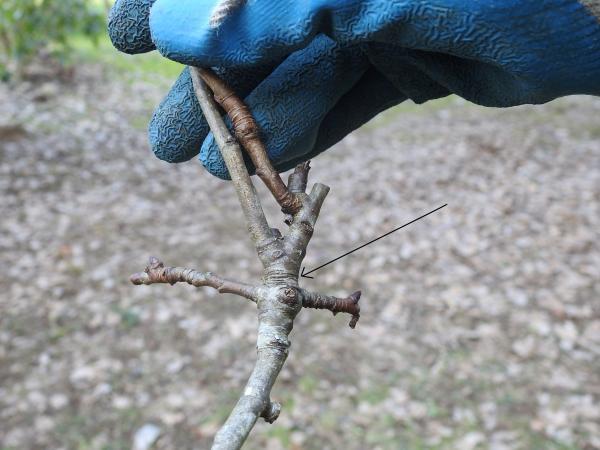
Figure 15–22. A mold and hold cut can be made on older trees to help them maintain their shape. The wrinkle that goes all the way around the stem marks the second year wood.
Kathleen Moore CC BY 2.0
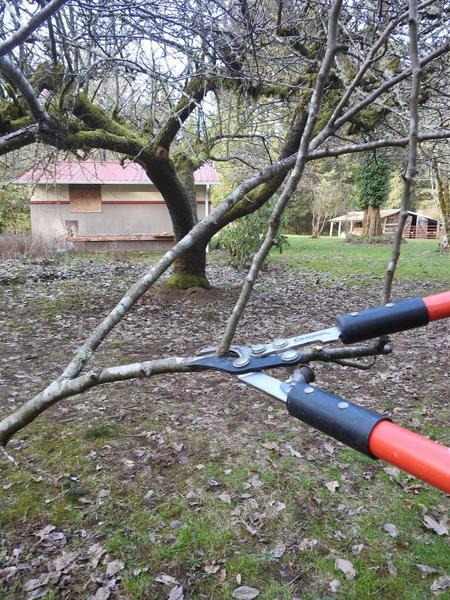
Figure 15–23. A bench cut removes a vertical branch back to a horizontal branch of equal thickness.
Kathleen Moore CC BY 2.0
Factors Affecting Fruiting
Pollination
Fruit and nut trees rely on pollination to reproduce. Pollen must travel from the anther (male organ) of one flower to the stigma (female organ) of a receptive flower, where the pollen germinates, fertilizes the egg, and creates a seed or seeds. Many fruit and nut trees rely on honey bees, mason bees, or bumble bees to move pollen from one flower to another. Pollinators are very sensitive; suspend any type of chemical management when they are active.
Some fruit trees, such as peaches and nectarines, are self-pollinating. Even with self-pollinating trees, it is always beneficial to have more than one cultivar to help with pollination. Self-pollinated trees produce less fruit than trees that require cross-pollination.
Most apples, pawpaws, pears, and plums require another cultivar of such a tree to pollinate flowers. This cross-pollination ensures genetic diversity and, generally, a larger crop. To cross-pollinate each other, cultivars must bloom at the same time: early season, midseason, or late season. Ideally, plant trees 50 feet to 100 feet apart. Some cultivars are better producers of pollen. For example, crabapple trees produce copious amounts of pollen and are often planted in orchards to help with apple pollination. Pear trees bloom earlier in the spring when bees are less active. Pear trees have paler blossoms and are not as fragrant as apple trees so are less attractive to bees. Planting multiple cultivars will help with pear tree pollination. Some growers resort to hand-pollination with a paintbrush.
Most fruit trees are "diploid:" having two sets of chromosomes—one set from the mother plant and one set from the father. Some apples and pears are listed as “triploid”—having three sets of chromosomes. Triploid trees will accept pollen from other trees of the same species, but they do not produce viable pollen for cross-pollination. If you plant a triploid pear or apple, you need to plant two other diploid pears or apples to ensure adequate pollination. Monoecious trees—pecans, for example—have both male and female imperfect flowers on the same tree. When male flowers (long, drooping structures called catkins) release pollen, the female flowers may not be at a stage of development where pollination is possible. Pecan trees are divided into two pollination types. A Type I tree releases pollen before its female flowers are ready. A Type II tree releases its pollen after the female flowers are receptive. To ensure adequate pollination, plant at least one tree of each type.
Pruning Fruiting Wood
Knowing where a tree forms flowers and bears fruit is crucial in understanding how to prune the tree. Stone fruit trees (such as peach and plum trees) bloom before leaves appear, while pome fruit trees (including apple and pear trees) generally bloom two weeks to three weeks after leaves appear.
Pome fruit trees produce fruit on the tips of shoots or spurs (very short branches that grow less than an inch a year) located on wood that is at least two years old (Figure 15–36). As a result, very light crops are produced if these trees are pruned by heading back all the branches because most of the fruiting wood is removed. Some cultivars, called spur-type, produce fruit perennially on spurs rather than longer branches. ‘Red Delicious’ is an example of a spur-type cultivar. Individual spurs live for many years, but their productive life is usually not more than 8 to 10 years. Spur-type cultivars produce smaller trees and should not be pruned as vigorously as non-spur-type cultivars.
Stone fruit trees, such as peaches, differ from pome fruit in that they bear most fruit from flower buds on one-year-old shoots. At least 12 inches to 18 inches of new growth is essential to ensure adequate fruit.
Weather
Midwinter temperatures of 0°F or below may kill some fruit buds on peaches, plums, cherries, and apricots and possibly result in tree injury. Such low temperatures, however, are rare in North Carolina. A greater risk comes from early and late frosts.
In the fall, if a cold snap comes suddenly and the plant has had no opportunity to “harden off” with a gradual drop in temperature in the weeks before, there is greater risk of damage from an early frost. If temperatures were already low before the cold snap, much less bud injury and tree death may occur. Buds and flowers can survive slightly lower temperatures if the temperature drop is gradual and if the minimum temperature occurs for only a short period.
On the other hand, in the spring, as the buds swell and develop, they become less cold hardy and more prone to injury. Spring injury from a late freeze is the greatest threat to fruit tree buds in North Carolina, with a temperature difference of 3°F to 4°F being the difference between a full crop and no crop. The stage of bud and flower development is significant in cold hardiness. Before the blossoms open, flower buds may survive temperatures down to 20°F to 23°F. Flower buds showing color, however, may only survive temperatures down to 25°F to 28°F. At full bloom, and with small developing fruit, damage may occur below 27°F to 28°F. Apple trees send out green leaves first, followed two to three weeks later by blossoms. Peach, plum, and apricot trees are very vulnerable because the first growth to emerge in the spring is the blossoms. However, even if 80% of the flowers are damaged, the remaining 20% can still result in a full crop of fruit that requires minimal thinning. To determine the extent of blossom injury after a cold snap, take shoot cuttings and place them in water to open and bloom. If the center of the flower (pistil) is brown, the blossom is damaged and cannot bear fruit.
Fruit Thinning
Thin apples, nectarines, peaches, and pears early in the season to prevent overproduction, which results in small fruits and increased problems with insects, diseases, and tree breakage (Figure 15–37). A heavy crop also reduces the chances for an adequate crop the following year.
Thin fruits when they are about the size of a nickel. Remove enough fruit so that the remaining ones are spaced approximately 6 inches to 8 inches apart along the branch (Figure 15–38). Even though it may look as though very few fruit remain, the fruit size at harvest more than compensates for the reduced number of fruit.
Harvest Guidelines
Table 15–6. Fruit and nut harvesting guidelines.
| FRUIT | YEARS TO HARVEST | APPROXIMATE HARVEST DATES | SKIN COLOR | GROUND COLOR stem end, bottom, or shaded side of the fruit |
SEED OR PIT |
FLESH TEXTURE AND/OR FIRMNESS | REMARKS |
|---|---|---|---|---|---|---|---|
| Apples | 2 – 6 | August to November | Light conditions and position in the canopy may affect color. Red apples: Blush or stripes change from dull red to bright red. Yellow apples: Skin turns from green to yellow. | Turns from green to yellow or green to yellow-green | Turns from greenish-white to dark brown when ripe | Crisp and juicy | Fruit should release easily from tree with the pedicel (stem) intact. Taste to confirm that apples have reached optimal tree-ripened maturity. Fruit lasts longer stored at 32°F. Red apples may not color as well in warmer regions. |
| Chestnuts, chinquapin | 3 – 5 | September | N/A | N/A | Spiny husks separate to reveal shiny brown seeds. Ripe nuts will fall to ground. Harvest promptly as nuts quickly decay. | Kernel is rubbery, cream to yellow in color. Chestnuts fresh from the tree are not as sweet as they are after they have been cured for 7 to 10 days. | To peel, score bottom with 'X'. Boil or roast. Fresh, unpeeled chestnuts stored in an airtight container last one month in the refrigerator and a year or more in the freezer. Dehydrated peeled nuts have a longer storage life but lose some flavor. Soak nuts in cold water 3 to 4 hours to rehydrate. |
| Figs | 3 – 4 | June to August | Turns from green to purple-brown or coppery-brown, depending on variety | Yellow-green | N/A | Flesh turns to strawberry-pink or amber, depending on variety. Fruit bends downward at pedicel (stem). | Pick fresh figs with stems attached. Fresh figs last only a few days; dry or make preserves or jam for long-term storage. |
| Mulberry, red | 8 – 10 | May to June | Turns red, deep purple, or black, depending on species | N/A | N/A | Soft, sweet, and juicy | Ripe berries fall off the tree; pick or shake the tree. Plant away from sidewalks and driveways because fallen fruit causes stains. Fruits are a bird favorite. White mulberry can be weedy. |
| Nectarines | 2 – 4 | May to July | Yellow-orange to dark orange, red, or reddish pink. Even-colored or patch. | Green changes to creamy-yellow. All green disappears before fully ripe. | N/A | Fruit softens and yields to hand pressure. Flesh color is yellow-orange with red around the pit; juicy, developed flavor. |
Sample ripening fruit to determine suitability for picking. Chill fruit after picking. |
| Pawpaw | 5 – 7 | August to September or to first frost | Turns lighter green, or a little yellow when ripe. Overripe fruit turns yellow with brown splotches and streaks like a banana. | Green | Seeds are easy to separate and remove before eating. | Fruit begins to soften like an avocado. | Ripe fruit has a fruity, floral aroma. Fruit picked before fully mature will ripen at room temperature like a peach or pear. |
| Peaches | 2 – 4 | June to August | Yellow-orange to dark orange, red, or reddish pink. Can be even-colored or patchy. | Green changes to creamy yellow. All green disappears before fully ripe. | Flesh does not adhere to pit in ripe freestone peach varieties. Flesh adheres to pit in ripe cling varieties. | Fruit yields to gentle hand pressure along the crease. Flesh color is yellow-orange with red around the pit; juicy, developed flavor. |
Fruits on the ends of branches and those high in the tree ripen first. Ripe fruit becomes uniformly shaped on both sides of the suture. Taste fruit as it ripens to desired sweetness. Chill fruit after picking. |
| Pears, Asian | 2 – 3 | August to October | Most varieties change from green to yellow-brown or yellow-green | Changes from green to yellow | Brown to dark brown | Very crunchy and juicy | Asian pears have tender skin that bruises and marks easily. Store under refrigeration for a few weeks. Will become spongy after 7 to 14 days at room temperature. |
| Pears, European | 4 – 6 | August to October | Harvest when green, but at fully mature size | Green with yellowish tinge | Light-brown to brown | Ripe pears yield to gentle hand pressure on the neck just below the pedicel (stem) | Pears develop maximum flavor and quality when picked mature, but before they ripen. Tree-ripened pears become mealy. Harvest as soon as the green color begins to change to a lighter green or yellow. Mature, ready-to-pick pears detach when lifted horizontally. Refrigerate after picking; allow them to ripen at room temperature several days until flesh is slightly soft before eating. |
| Pecans | 4 – 8 (grafted) 8 – 10 (seedling) | October to December | N/A | N/A | N/A | Pecan kernels are brittle when adequately dry | Harvest pecans when the shuck (outer fruit wall) opens and releases the nut. Before storing, dry pecans in paper or burlap bags hung in an area with good air movement. Freeze for long-term storage. |
| Persimmons, American and Asian | 3 – 7 | September to November | Orange to reddish-brown on native varieties, orange-red to red on Asian varieties | N/A | Fruit of native and astringent Asian varieties must be soft before eating. Nonastringent Asian varieties can be eaten when fruit is still firm. | Persimmon fruit continues to ripen after picking. Frost may ruin native and astringent Asian varieties. | |
| Plums | 4 – 6 | June to August | Turns from green to yellow, red, or dark purple, depending on variety | Yellow to yellow-green | N/A | Flesh is firm but yields to gentle pressure | Chill ripe fruit after picking |
| Walnut, black | 4 – 7 (small crop) 20 – 30 (large crop) |
August to September | N/A | N/A | Press thumb into husk: if it yields and makes a dark mark, nuts are ready to harvest. Nuts will fall from the tree when ripe. Pick up and husk promptly. | Kernel should be creamy-white and firm | Wear rubber gloves as husks can irritate skin. Rinse and dry nuts after removing husks. |
Integrated Pest Management
Weeds, insects, and diseases cause tree stress and crop damage. Most pests can be managed using integrated pest management (IPM) techniques. Proper identification of the pest is the first step in any IPM program, and identification leads to identifying appropriate management strategies. Review the chapters on IPM, Insects, and Diseases for specific information on how to manage pest problems.
To minimize pest problems:
- Select resistant cultivars.
- Provide optimum growing conditions: proper soil pH, drainage, light, and spacing.
- Prune correctly to provide maximum sunlight and air.
- Clean up and destroy plant litter and damaged fruit.
- Fertilize according to recommendations on a soil test report and the amount of new growth.
- Correctly identify and manage weed, insect, disease, and animal pest problems.
If spraying is warranted:
- Choose only a product that is labeled specifically for both the pest problem and the plant.
- Mix the product according to the labeled instructions.
- Use a good sprayer, and spray to achieve maximum coverage.
- Time sprays for maximum benefit.
Time early spray applications according to fruit bud development—not the calendar (Figure 15–36). Dormant applications minimize pest pressure later in the season. During the growing season, begin pesticide applications after the petals fall off the blossoms (petal fall). Do not apply any insecticides during bloom because this harms the insects required for pollination.
Weeds
Weeds or grasses growing between or under fruit and nut trees compete for soil nutrients and moisture and reduce tree growth. Remove all vegetation under the trees, and place a 3-inch to 4-inch layer of mulch from just outside the trunk to the dripline (the circle formed by the tips of the outermost branches of the tree). Mulch suppresses weed growth and conserves soil moisture, but it may also provide cover for voles or mice. These rodents burrow under the mulch and gnaw tree trunks or roots, killing the tree or impeding its growth. Minimize aboveground damage by placing a guard around the base of each tree, and use traps to manage these pests. Keep mulch back 12 inches from the tree trunk to force voles out into the open and allow natural predators to help manage populations.
Avoid mechanical cultivation—hoes, tillers or discs—to eliminate weeds because tree roots near the surface are destroyed during cultivation. Weed trimmers are especially harmful. If the cutting line strikes the bark of the tree, the line crushes layers of cells under the bark and girdles the tree. Herbicides are an effective alternative, but be careful to follow the label directions and keep the herbicides off a tree’s foliage and green bark.
Insects
Codling moth larvae (Cydia pomonella) overwinter behind loose bark or in loose soil around the base of the tree in thick silken cocoons. The adult moths are ½-inch to ¾-inch long with mottled gray wings and a coppery-brown band at the wingtips (Figure 15–39). Moths lay many eggs on fruits, leaves, or nuts soon after petal fall. Larvae are light-pink worms with a dark-brown head. They tunnel inside the apple and pear fruits leaving frass-filled holes (Figure 15–40). Codling moths produce two to three generations per year and are particularly damaging to late-ripening fruit. Prevention is the best management, as codling moths can be difficult to manage if populations have built up over several years. Choose late-ripening apple or pear tree varieties, or late-leafing walnut trees, as they are most resistant. Prune trees to a low height for easy access to fruit and braches. Remove infected fruit immediately from the tree and the ground to maintain orchard sanitation. Bagging individual fruit four weeks to six weeks after bloom provides excellent control, but bagging is a labor-intensive process only practical for small trees. Hanging sticky traps to catch adult codling moths can be part of an overall management protocol, but traps are not effective on their own. Tolerating some level of damage is also recommended, as the codling moth is nearly impossible to completely eradicate. Infected parts of the fruit can be cut away, and the rest is still edible. If chemical management is warranted, apply when larvae have just emerged from the eggs. If the larvae have already entered the fruit, they will be protected from pesticides. Trees can also be infected from neighbors’ yards even if you are treating, so a neighborhood-wide effort is advised.
Oriental fruit moths (Grapholita molesta) attack peach, plum, cherry, and apple trees (Figure 15–41). The first-generation larvae tunnel into the ends of new shoots, causing shoot dieback (Figure 15–42). Later generations feed inside the fruit. Fruits near the top of a tree that are beginning to color are the first to be attacked, so take samples from there. Placing pheromone traps in the orchard in early spring to disrupt mating is the preferred treatment strategy. The braconid wasp (Macrocentrus ancylivorus) is a natural parasite to oriental fruit moth and peach tree borer larvae. Planting sunflowers will encourage the braconid wasp population. Avoid broad-spectrum insecticides, which negatively affect populations of Macrocentru ancylivorus.
Plum curculio (Conotrachelus nenuphar) attack several soft fruits, including plums and apricots, and can cause superficial damage to apples (Figure 15–43). Adults are brown, black, and gray mottled weevils that overwinter in wooded areas and become active at bloom time. Eggs are laid in crescent-shaped flaps cut in the fruit skin shortly after petal fall. Larvae hatch and feed inside the fruit. Sanitation is important. Remove and dispose of damaged or fallen fruit. In early morning, place a tarp under trees and shake branches. The adult weevils are slow-moving in the morning and will fall from the tree where they can be crushed. Use a registered insecticide after petal fall to ensure pollinators are not affected.
Peach tree borers (Synanthedon exitiosa) attack the trunk and lower branches of stone fruit trees and other members of the Prunus genus, causing sap to ooze from the wounds. Adults are black and orange moths but look and behave like wasps (Figure 15–44). The cream-colored larvae have a brown head and can reach 1½ inches in length. They tunnel under the bark, and over several years they can girdle the tree. Parasitic nematodes are a treatment option, but results vary. A registered insecticide will be most effective against egg-laying and will kill tiny larvae when they hatch. Apply it at the base of the trunk several times throughout the growing season, especially in early September when adult moths emerge.
San Jose (Quadraspidiotus perniciosus) and white peach scales (Pseudaulacaspis pentagona) (Figure 15–45) overwinter as nymphs and start feeding as soon as sap begins flowing in the tree. The young crawlers feed on branches, leaves, and fruit, causing red, spotted areas (Figure 15–46). Infested leaves usually drop, and branches lose vigor and die. Biological predators, such as the twice-stabbed lady beetle (Chilocorus stigma), or parasites like chalcid and aphelinid wasps, are effective against scale insects. Use a dormant oil spray at two-week intervals with good spray coverage just before bud break, or treat with registered insecticide when crawlers are active.
Spider mites (Tetranychus urticae) suck juice from peach tree leaves, creating stippling and causing leaves to turn yellow or red (Figure 15–47). Spider mites produce webbing colonies, especially on the undersides of leaves. Hot, dry weather that causes water stress encourages their development. Spider mites have many natural enemies, including predatory mites and thrips that, if supported by limiting broad-spectrum insecticides, naturally keep populations in check. A strong water spray, horticultural oil, or soap spray are other management strategies. Be sure to reach the undersides of leaves.
Catfacing is the pitting and fruit deformity caused by adult insects with piercing-sucking mouthparts, such as lygus bug, stink bug, tarnished plant bug, and boxelder bug. These insects damage both pome and stone fruits (Figure 15–48). Weeds are the primary food source for these insects, so keeping weeds to a minimum around the orchard will help manage populations. Several parasitic wasps and predatory insects, such as big-eyed bugs, assassin bug, damsel bugs, and crab spiders, attack these insects. Reducing the use of broad spectrum insecticides helps these biological predators keep pest populations in check. Use of an insecticide is a last resort to prevent substantial fruit damage.
Diseases
Bacterial spot (Xanthomonas arboricola) is a bacterial disease on peach trees that results in irregularly shaped lesions on the leaves (Figure 15–49) and sunken lesions on the fruit. Prevent it by growing resistant cultivars and spraying dormant trees with copper bactericides.
Common Pecan Tree Insect Problems
Pecan weevils (Curculio caryae) attack the nut (Figure 15–50). The weevil punctures the nuts in early August (Figure 15–51); the larvae feed within the nut, causing some nuts to fall in a few days. Pecans damaged early in the season fall off with the shuck attached. Nuts damaged later in the season fall from the shuck with a small hole in the shell where the larvae have exited.
Stink bugs (Pentatomidae) puncture nuts before and after nut hardening. This puncture causes nut drop or black-spotted bitter kernels (Figure 15–52).
Twig girdlers (Oncideres cingulate) cut off the vascular system of twigs and small branches, causing them to drop in September. The branches appear as if cut with pruners (Figure 15–53). Dispose of fallen shoots because they contain eggs for the next generation of twig girdlers.
Insect Management Measures for Pecan Trees
- Plant at least 200 feet from wooded areas.
- Do not grow vegetables or soybeans near pecan trees (these crops are alternate hosts for stink bug pests).
- Manage broadleaf weeds under the trees.
- Gather and destroy fallen twigs and nuts.
- When other options have been exhausted, use registered insecticides labeled for use on pecan trees to treat the specific insect pest
Brown rot (Monilinia fructicola) is the most common problematic fungus and occurs during bloom. It kills blossoms and then reoccurs two weeks to three weeks before harvest on ripening stone fruits. The rotted areas are soft and brown. Brownish-gray mold covers the rotted areas (Figure 15–54). Infected fruits often shrivel, gradually turning into hard, wrinkled black mummies. To avoid brown rot, plant resistant cultivars. If trees become infected, remove and destroy infected fruit and branches. Prune the trees to improve air flow, and avoid overhead watering to keep foliage dry. If problems persist, use a registered copper-based fungicide.
Cedar apple rust (Gymnosporangium juniperi-virginianae) occurs on apple and crabapple trees. It causes small bright-yellow spots on the leaves in early summer that enlarge and turn orange with black specks in the center (Figure 15–55). A cup-shaped structure forms on the underside of each infected leaf (Figure 15–56). The disease organism spends part of its life on cedar trees, where it produces structures that release spores from orange gelatinous appendages in the spring (Figure 15–57). Cedars as much as ¼-mile away can serve as alternate hosts so if infestation is severe remove all cedars in a ½-mile radius. Apply a registered fungicide from early pre-pink through petal fall for fruit infections and from pre-pink through second cover for leaf infections.
Fire blight (Erwinia amylovora) is a bacterial disease that is spread by bees during bloom on pome fruit trees and their relatives. New shoots rapidly turn black at the tips and die, with blackened leaves remaining attached to the stem (Figure 15–58). Newly infected wood has pink-orange streaks. Watery brown sap oozes from cankers or damaged tissue, created by previous years’ infections. Fire blight is most easily spread when temperatures are between 75°F and 85°F with high humidity or precipitation. Choose resistant cultivars. Avoid heavy pruning and high nitrogen fertilizers, which cause rapid, tender growth that is most susceptible to fire blight. Do not irrigate trees during bloom, and remove and discard any infected tissue in summer or winter when the disease is inactive. Copper products are the only chemical management available to homeowners, and they are difficult to time and apply effectively.
Peach leaf curl (Taphrina deformans) occurs just after bloom and causes unfolding terminal leaves to blister, swell, and curl. The stunted leaves turn reddish-purple and fall off (Figure 15–59). New stems are stunted and distorted. Cool, wet weather when leaves are emerging favor the disease. To avoid peach leaf curl, plant resistant varieties. For already infected trees, treat with a registered fungicide yearly after leaf fall.
Peach scab (Cladosporium carpophilum) causes small, round, dark, olive-green-to-black spots to form near the stem end on nearly full-grown fruit (Figure 15–60). Severely infected fruit can crack, shrivel, or not ripen. The fungus overwinters in light-brown lesions appearing on new twig growth. Water splashes these lesions and moves spores onto the fruit. Spring and early summer in North Carolina provide ideal growing conditions. All peach varieties are susceptible to scab, though some more than others. The worst infection usually occurs during the first fruiting season, or around the third growing season after planting. Avoid low-lying planting sites, and prune trees to maintain good air circulation.
Powdery mildew (Golovinomyces cichoracearum) is a whitish-gray powdery mold that occurs on buds, young leaves, and green twigs (Figure 15–61). Leaves may be crinkled or cupped upward, dwarfed, narrow, and erect. Plant resistant varieties and maintain good cultural practices. Prune out infected areas during dormant season and use a registered fungicide if necessary.
Apple scab fungus (Venturia inaequalis) causes dull, smoky spots on young leaves and petioles (Figure 15–62). The spots later turn olive-green, then blacken and drop off the tree. The secondary infection on the apple fruit produces lesions that cause the fruit to become deformed, knotty, and cracked (Figure 15–63). This fungus overwinters in fallen leaves on the ground. Cool, wet weather favors infection, and new leaves are most susceptible. Avoid overhead watering, and prune trees to promote good air circulation. In autumn, remove any fallen leaves, spray trees with urea to hasten leaf fall, and apply lime to fallen leaves to prevent the spread of infection. Use a registered fungicide at the first sign of greening leaves in the spring.
A Year in the Life of a Deciduous Tree
Winter
The tree has shed its leaves and remains dormant until spring. It is possible to see the entire tree structure and make informed decisions about where to prune. Fertilize in late winter.
Spring
During early spring, gradually increase irrigation as temperatures rise. Add a new layer of mulch around the base of the tree, avoiding the trunk, to help conserve water and manage weeds. Fertilize trees only if they show pale leaves and weak growth. Be sure to follow label directions; do not fertilize young fruit trees as this can slow their maturation. Flowering, pollination, fruit set, and abundant vegetative growth occur in spring. Thin fruit, and remove unwanted vigorous shoots to begin summer pruning. Scout for any insect or disease problems, and address them promptly.
Summer
Monitor rainfall and irrigate trees deeply if necessary. Some varieties of tree fruits ripen in summer. Taste fruit to check for ripeness and harvest, if necessary. If fruit spurs and leaves are breaking off when you pick the fruit, it is not ready to harvest. Continue to shape the tree with summer pruning, removing unwanted vigorous shoots. Scout for any insect and disease problems, and address them promptly.
Fall
Harvest varieties of tree fruit that ripen in fall. Do not leave fruit on the tree too long before picking, as this can attract pests and diseases. Chlorophyll production ends, and as it disappears from the leaves, other pigments become visible with a color display prior to leaf drop. Water trees into October so they are not drought-stressed going into winter. Avoid pruning in fall when fire blight is active. Add a layer of mulch to insulate the roots from cold temperatures. Rake up and dispose of any diseased or insect-infested leaves, twigs, and fruits to avoid spreading problems to healthy trees.
Case Study–Think IPM: Unhealthy Peach Tree
It is June, and your four ‘Winblo’ peach trees have fruit that is starting to rot on the tree before completely ripening. Some of the peaches are shriveled.
- Monitor and scout to determine pest type and population levels.
- Accurately identify host and pest.
- Consider economic or aesthetic injury thresholds. A threshold is the time to take action.
- Implement a treatment strategy using cultural, mechanical, biological, or chemical management, or a combination of these methods.
- Evaluate success of treatments.
Sample responses are included in italics.
1. Monitor and scout to determine pest type and population levels.
You have noticed that the peach trees have had this condition in the past and it seems to get worse every year.
2. Accurately identify host and pest.
Use the steps outlined in chapter 7, "Diagnostics" to help you identify the problem. The following questions will help.
Step 1. Identify the plant: ‘Winblo’ peach trees.
Step 2. Describe the problem: Many of the peaches are rotting on the trees. Some are wrinkly with a fuzzy substance covering them and some have brown spots on them.
Step 3. Identify what is normal:
What does the healthy part of the plant look like? Healthy peach fruit from ‘Winblo’ peach trees have a reddish tint with an orange-to-yellow background when ripe.
What does the unhealthy part of the plant look like? The unhealthy fruit has brown, fuzzy spots, and is rotten and shriveled.
Have you had a soil test? No. (For information on how to submit a soil test see “Soils and Plant Nutrients,” chapter 1.)
Step 4. Cultural practices:
Age and history of plant: The trees are five years old.
Irrigation: Trees are not watered unless there is a drought.
Fertilizer: The trees have never been fertilized.
Maintenance: The trees have never been pruned.
Step 5. Environmental conditions:
Are there any significant water issues? Yes. A lot of rainfall occurred in early spring. There was standing water around the trees for several days at a time.
What is the soil like? It is a clay soil, very red.
Describe the light. How many hours of sunlight? The peach trees receive 9 hours of full sun.
Describe any recent changes or events: A lot of rain occurred in early spring. Now in June the rain is intermittent. There have been no other changes around these trees.
Step 6. Signs of pathogens and pests:
On the leaves: I do not see signs of insects, a fungus, or a disease. There are no spots or missing pieces of the leaves.
On the stems: I do not see signs of insects, a fungus, or a disease.
On the roots and in the soil: I do not see anything near the roots. Some dried or rotting fruits are on the ground, and some have flies and fly larvae on them.
On the fruit: I saw some stink bugs feeding on some of the fruit.
Step 7. Symptoms:
On the leaves: The leaves appear healthy.
On the buds/flowers: The peaches flowered in the spring, and many blooms died during a frost and turned a brownish color. More blooms died and turned brown during the spring rains.
On the stems: Most stems have smooth reddish-brown bark. Some of the stems are dead with dark-gray lesions.
On the roots: Roots are creamy-white and look healthy. There is no odor coming from them.
On the fruit: About 40% of the fruits are damaged. Some are dried and shriveled and have remained on the tree (Figure 15–64), while the majority have fallen to the ground. There are some fruits with brown mushy spots on them.
Step 8. Distribution of damage in the landscape:
Are other plants in the landscape affected? This is widespread among the four peach trees. I also see some wild plums in the greenbelt behind my home with the same wrinkly, rotten fruit.
Step 9. Distribution of damage on the plant and specific plant parts:
Where is the damage seen on the plant? Is it evenly distributed around the tree or localized? Inside the canopy or on the edges? High in the canopy or near the ground? The flowering and fruiting wood seems most affected, so the damage is on the outer edge of the canopy.
Step 10. Timing:
When did you notice this problem? A few fruits started looking like this two years ago. Last year the damage was on a few more fruits, and this year it is much worse.
You saw stink bugs and flies on the fruit, which are signs of a possible insect problem. You learned in “Insects,” chapter 4, that stink bugs are a true bug in the order Hemiptera. They have piercing-sucking mouthparts. There was no stippling on the leaves or fruit to support these insects as the problem. You also learned in “Insects,” chapter 4, that the flies are in the Diptera order and that they have either piercing, sucking, or sponging mouthparts and are often seen as secondary pests when there is rotting fruit. There is no evidence to support flies as the cause of damage to the tree.
Because there were symptoms on the fruit—wrinkly brown or rotting spots—and because some stems were damaged with brown streaks inside the twig wood, you hypothesize this plant is suffering from a disease. You decide to research peach diseases by typing “peaches +disease +nc state” into your search engine. You learn that peaches are not well-adapted to North Carolina’s climate and often struggle to produce a reliable crop. You discover the Extension publication Growing Peaches in North Carolina, which covers all the major diseases. From the signs and symptoms noted in the diagnostic steps, you determine that your peaches have brown rot (Monilinia fructicola).
You could send a sample to the NC State Plant Disease and Insect Clinic for a confirmation of diagnosis. But after carefully reviewing the diagnostic steps, you are confident you have identified the problem. The poor cultural practices of never pruning, soil sampling, or removing shriveled and mummified fruit are the primary causes of the disease having spread. The dead limbs most likely died due to cankers forming and girdling the limbs. The spores on the fruit and the mummified fruit being left on the tree or on the ground increased the pathogen, so that all of the trees now have brown rot. You also learned from Growing Peaches in North Carolina that the wild plums behind your home can also be a vector of the disease.
3. Consider economic or aesthetic injury thresholds. A threshold is the point at which action should be taken.
After researching brown rot, you learn that without proper sanitation, pruning, and chemical control, the disease can quickly reduce peach yields. Brown rot on the fruit is also unsightly, and the smell of rotting fruit is not the most appealing. These trees provide shade in your backyard and, in previous years, provided a modest harvest of delicious peaches. You would like to save these trees, but also recognize that peach trees can struggle in North Carolina and they will always require a high level of maintenance. You decide to try some management techniques for the next two years to see if the problem decreases.
4. Implement a treatment strategy using physical, cultural, biological, or chemical management, or a combination of these methods.
Physical—First, you clean up any mummified or rotten fruit left on the ground from previous years is cleaned up and disposed of off-site. You maintain a pruning schedule to remove any diseased limbs in the spring, before bloom. You pick fruit regularly so that it does not become overripe before harvesting. You are sure to remove and discard off-site any fruit left over after the last harvest, including mummified fruits that are still hanging on the trees. You consider talking to your homeowners association to see if it is possible to remove the wild plum trees, which are vectors of brown rot.
Cultural management—You obtain a soil test and amend the soil according to the test results. You address the heavy clay soil by applying a 3-inch layer of organic mulch around the trees every fall. You maintain a proper irrigation schedule, making sure the trees receive at least 1 inch of water per week during the dry period.
Biological management—No recommended strategies exist.
Chemical management—There are several fungicides to manage brown rot; they must be applied at a timely interval because the infection can start when trees are in bloom. If conditions are dry between fruit set and ripening, brown rot is not usually a problem. If there is rain, apply fungicide at the first sign of fruit color development. This is usually around three weeks before harvest. It is also important to remember to rotate fungicides to reduce resistance.
5. Evaluate success of treatments.
Keeping a garden journal or notes about the management strategies tried and their results will help make future decisions easier. Some of the management strategies may take time to produce results, and having a written record will help to jog your memory.
Frequently Asked Questions
1. Why is my tree not producing fruit?
Your tree may not produce fruit for many reasons. The tree’s age is important; a tree less than three years old may not produce a reliable crop, and old trees may not support a good crop. Frost can also be a culprit. Flowers do not have to be in full bloom to be affected by frost. As soon as flower buds begin to swell, temperatures below 29°F cause the buds to turn black and die. Lack of pollination also affects fruit production. Avoid spraying your trees during the day when pollinators are most active. Be sure you have planted any trees needed for cross-pollination. Finally, vigorously growing trees put more energy toward leaf, trunk, and root production than flower and fruit production. Shoot growth on bearing fruit trees should average 12 inches to 18 inches a year. What causes trees to grow too vigorously? Over fertilization and over pruning. Heavy nitrogen application favors wood over flower growth. Fertilizing the grass or other plants surrounding the trees may affect fruit trees. If you have not over fertilized you could be overpruning. Fruit trees need to be pruned each winter, but heavy heading cuts can cause a tree to produce leaves and branches instead of fruit.
2. I have a large overgrown pear tree that does not produce very well. How do I get it to fruit for me again?
Restorative pruning of a large fruit tree takes a few years and quite a bit of work. You never want to remove more than 25% of a tree’s canopy in one year. For the first year or two, remove dead wood, suckers, water sprouts, or crossing branches. Next, make two to four cuts of major branches. This helps decrease the height to a more manageable size and allows for better light penetration.
3. Last year I had a ton of apples and this year not nearly as many. Is there something wrong with my tree?
Many apple trees have a natural biennial cycle of alternate bearing habits. They produce more fruit in one year and less the next. Years with heavy fruit set signal to the tree to have a subsequent year with lighter fruit. This is mitigated by thinning the fruit in years with heavy fruit set three weeks after the fruit has set.
Further Reading
Childers, Norman F. Modern Fruit Science. 10th ed. Gainesville, Florida: Horticultural Publications, 1995. Print.
Westwood, Melvin Neil. Temperate-Zone Pomology: Physiology and Culture. 3rd ed. Portland, Oregon: Timber Press, 2009. Print.
Chapter Text Hyperlinks
NCDA&CS Agronomic Services – Soil Test Forms & Information
USDA “Understanding the Soil Test Report”
NC State Extension, Our County Centers
Peachtree Borer in the Landscape
Pecan Weevils, Beaufort County Center & Wilson County Center
Staying Ahead of Stink Bugs, Pender County Center
Growing Peaches in North Carolina, AG-30
North Carolina Plant Disease and Insect Clinic
2016 North Carolina Peach and Nectarine Disease and Pest Management Guide
For More Information
NC State Resources
- Apple Orchard Management, High-Density
- Apple Orchard Management, Integrated
- Growing Fruit Trees in North Carolina (2 min)
- Peach Growers Portal
- Peach Tree Videos
- Pecans
- Brown Marmorated Stink Bug
- Codling Moth
- Disease and Insect Management in the Home Orchard
- Fruit Disease Information Notes
- Oriental Fruit Moth
- Peach IPM
- Peachtree Borer in the Landscape
- Plum Curculio
- San Jose Scale
- Spider Mite Outbreaks
- Twig Girdler
- White Peach Scale
More NC State Resources
Other Resources
- Harvesting Tree Fruits, by University of California
- Home Garden Peaches, by University of Georgia
- The Home Orchard, by University of California Videos
- Part I: (59:19 minutes)
- Part II: (59:08 minutes)
- Managing Pests in Home Fruit Plantings, by Purdue University
- Tree fruit pathology, Michigan State University
Contributors
Author: Michael L. Parker, Extension Specialist, Department of Horticultural Science
Contributions by Extension Agents: Danelle Cutting, John Vining, Matt Jones, Colby Griffin, Mary Hollingsworth
Contributions by Extension Master Gardener Volunteers: Barbara Goodman, Jackie Weedon, Karen Damari, Kim Curlee, Chris Alberti, Edna Burger, Connie Schultz, Lee Kapleau, Debbie Green, Caro Dosé
Content Editors: Lucy Bradley, Associate Professor and Extension Specialist, Urban Horticulture, NC State University; Director, NC State Extension Master Gardener program;
Kathleen Moore, Urban Horticulturist
Copy Editor: Barbara Scott, Debbi Braswell
Based in part on text from the 1998 Extension Master Gardener manual prepared by:
Ken Sorensen, Extension Specialist, Department of Entomology
Erv Evans, Extension Associate, Department of Horticultural Science
How to cite this chapter:
Parker, M. 2022. Tree Fruits and Nuts, Chapter 15. In: K.A. Moore, and L.K. Bradley (eds). North Carolina Extension Gardener Handbook, 2nd ed. NC State Extension, Raleigh, NC. <https://content.ces.ncsu.edu/extension-gardener-handbook>
Publication date: Feb. 1, 2022
AG-831
Other Publications in North Carolina Extension Gardener Handbook
- 1. Soils & Plant Nutrients
- 2. Composting
- 3. Botany
- 4. Insects
- 5. Diseases and Disorders
- 6. Weeds
- 7. Diagnostics
- 8. Integrated Pest Management (IPM)
- 9. Lawns
- 10. Herbaceous Ornamentals
- 11. Woody Ornamentals
- 12. Native Plants
- 13. Propagation
- 14. Small Fruits
- 15. Tree Fruit and Nuts
- 16. Vegetable Gardening
- 17. Organic Gardening
- 18. Plants Grown in Containers
- 19. Landscape Design
- 20. Wildlife
- 21. Youth, Community, and Therapeutic Gardening
- Appendix A. Garden Journaling
- Appendix B. Pesticides and Pesticide Safety
- Appendix C. Diagnostic Tables
- Appendix D. Garden Tools
- Appendix E. Season Extenders and Greenhouses
- Appendix F. History of Landscape Design
- Appendix G. Permaculture Design
- Appendix H. Community Gardening Resources
- Appendix I. More NC State Resources
- Glossary
N.C. Cooperative Extension prohibits discrimination and harassment regardless of age, color, disability, family and marital status, gender identity, national origin, political beliefs, race, religion, sex (including pregnancy), sexual orientation and veteran status.

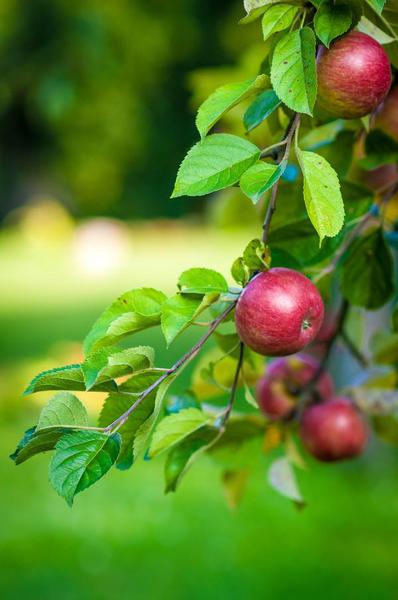
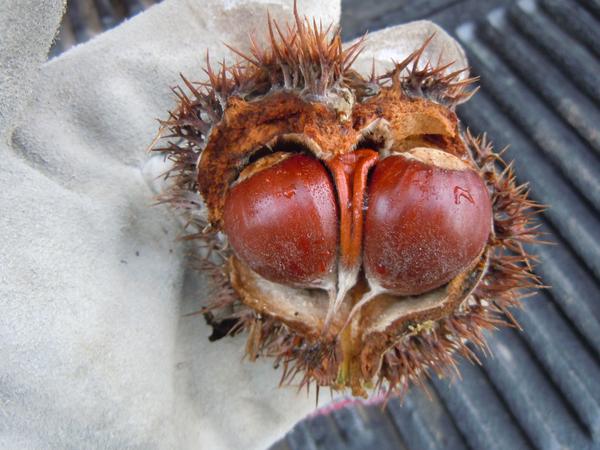

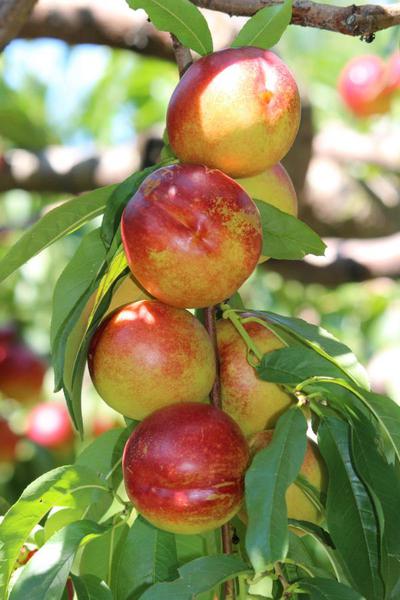
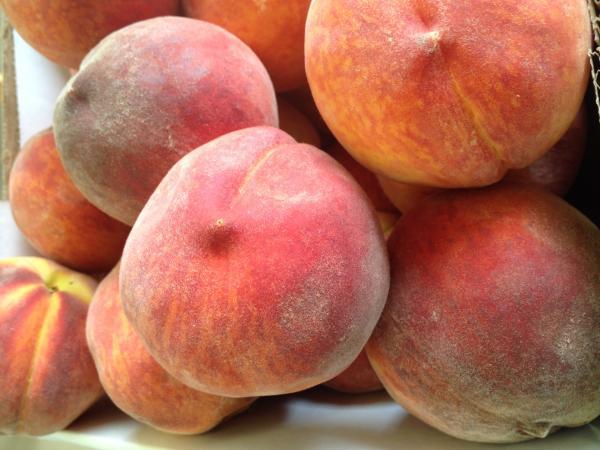
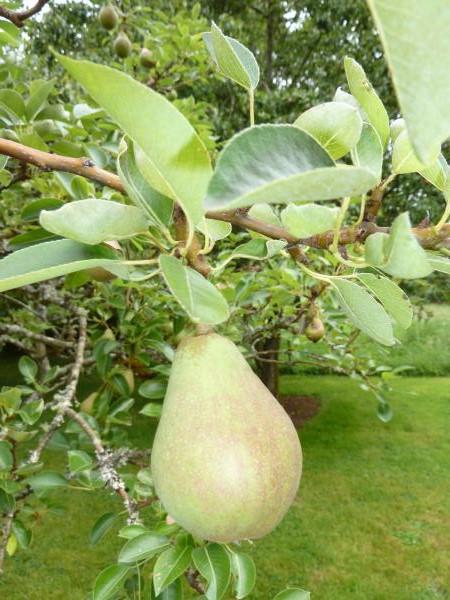

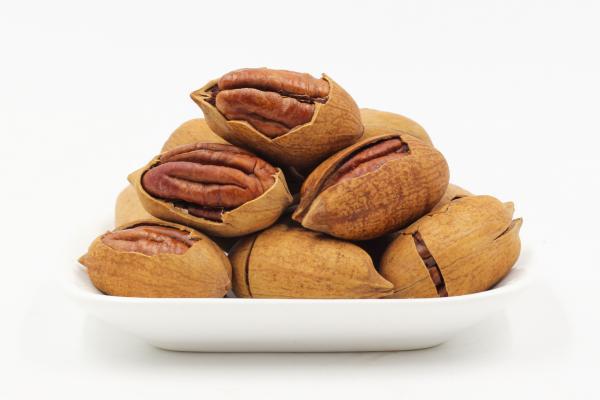
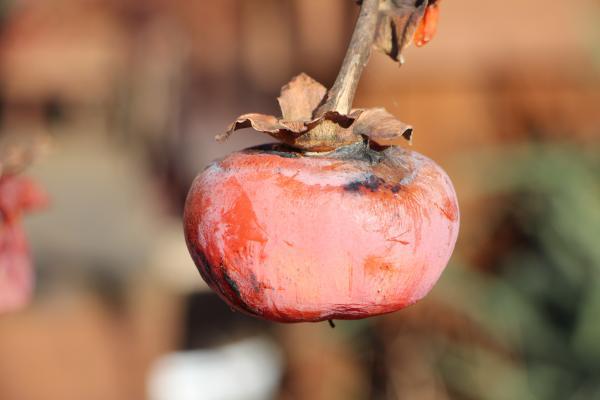
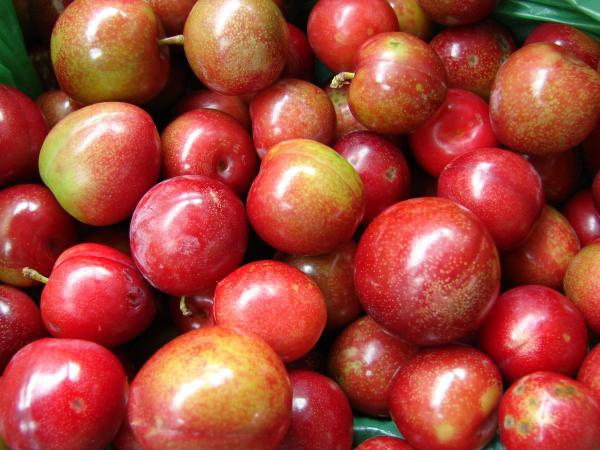
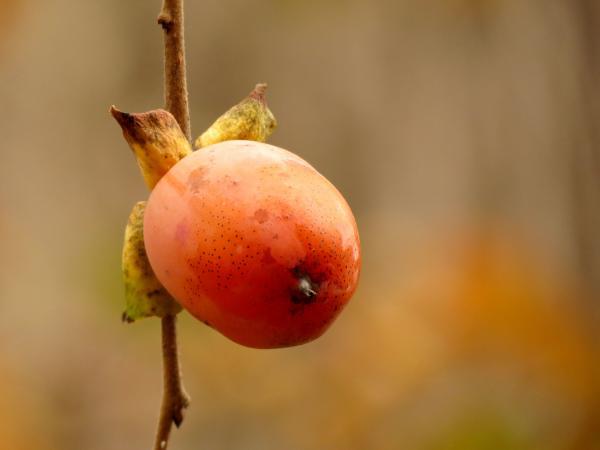

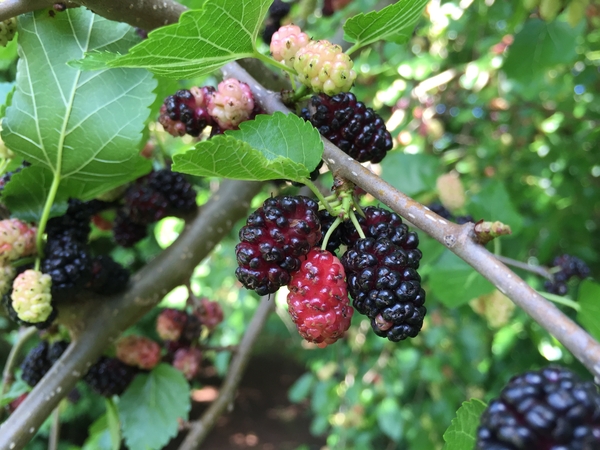
.jpg)
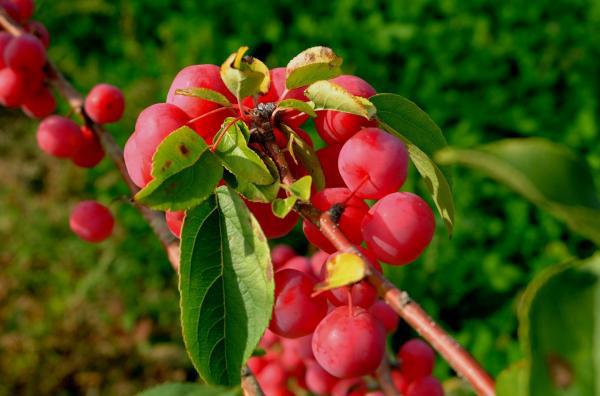

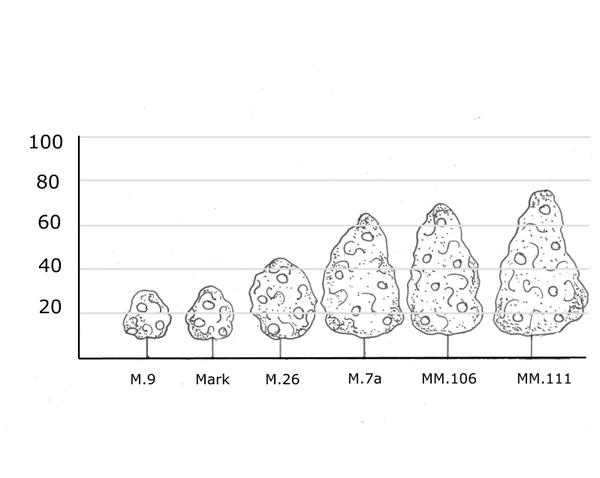
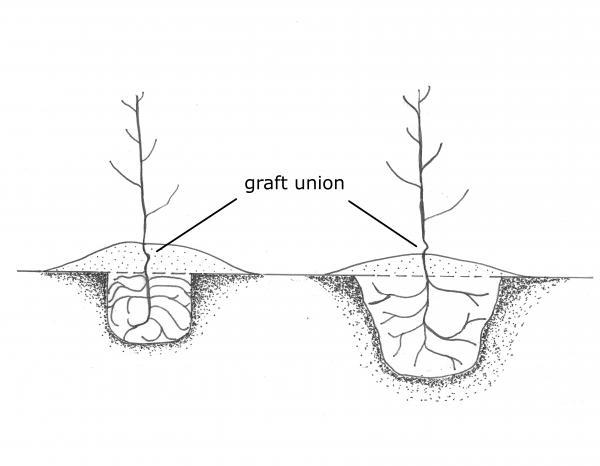
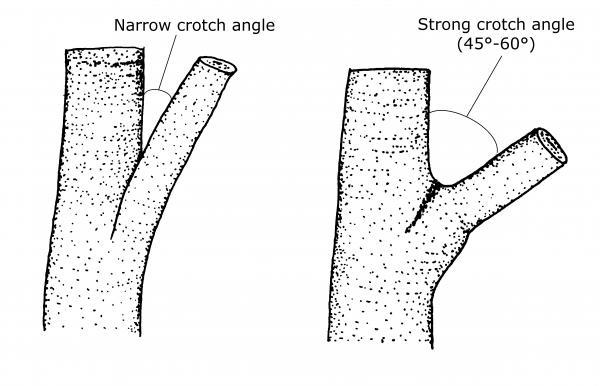



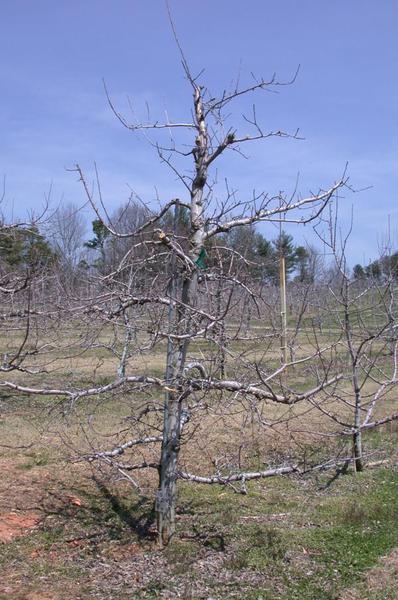
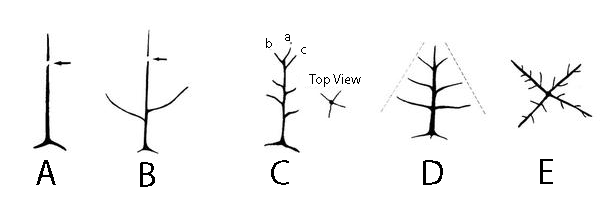
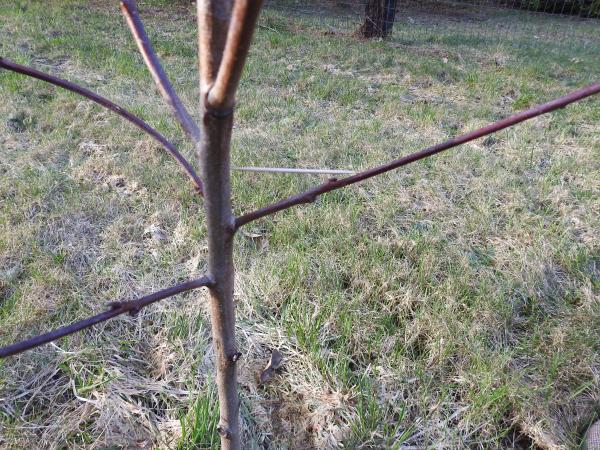
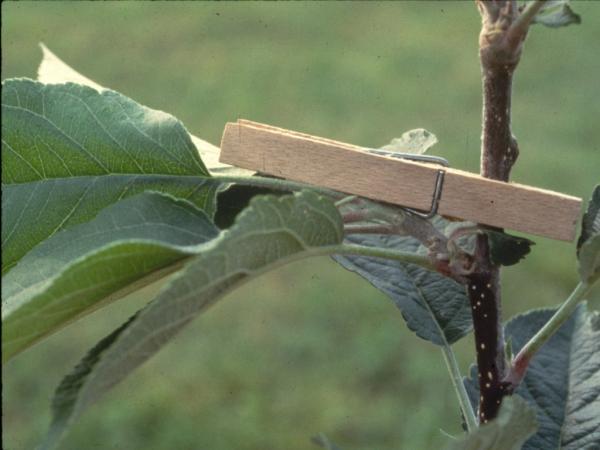


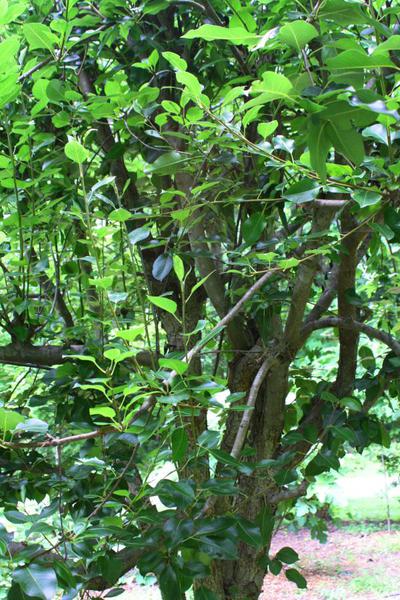
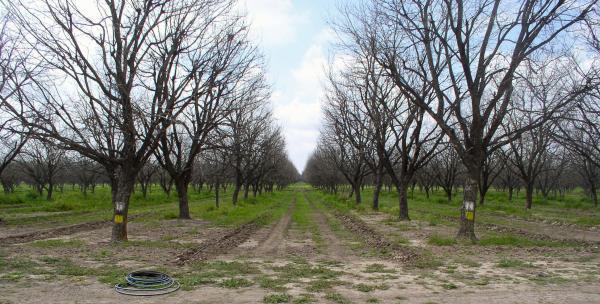
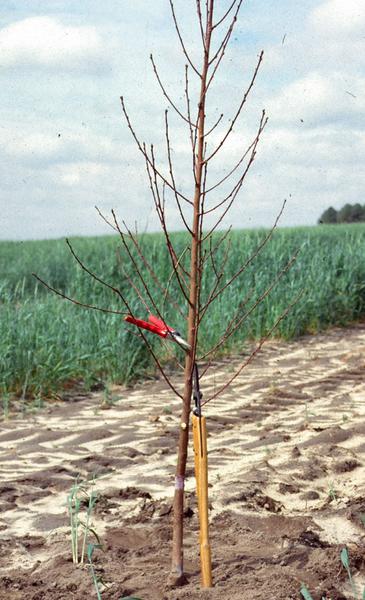
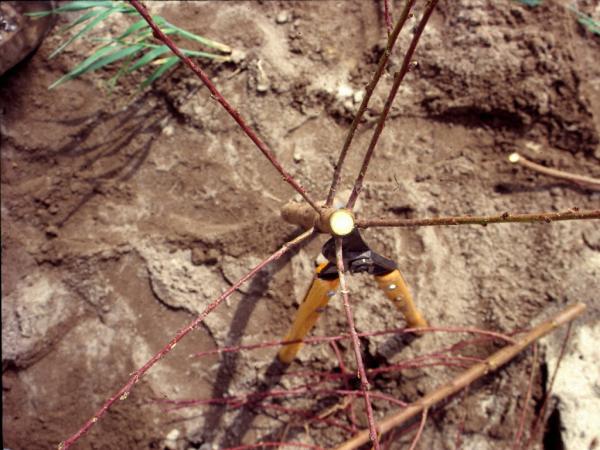
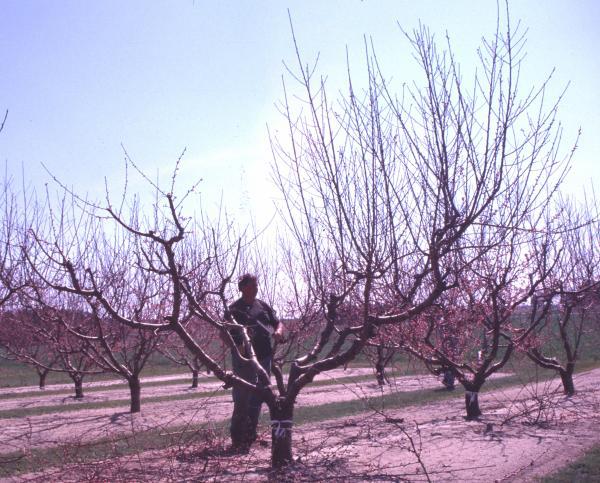
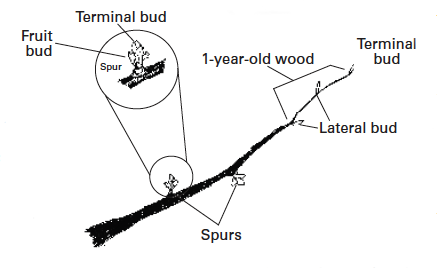


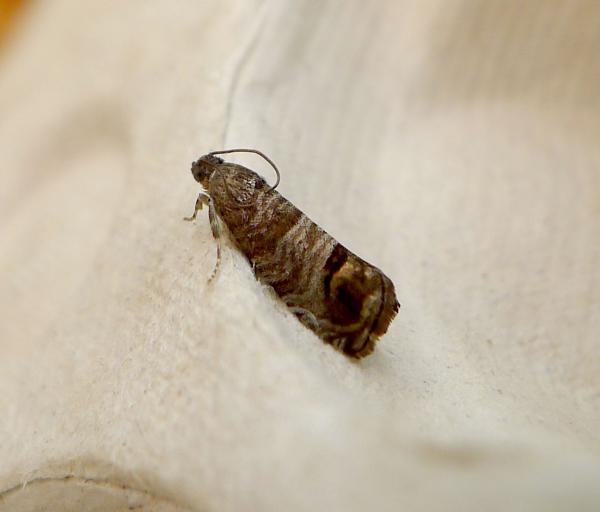
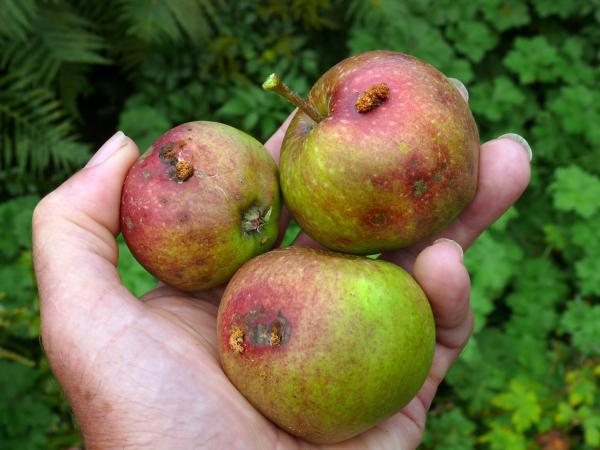
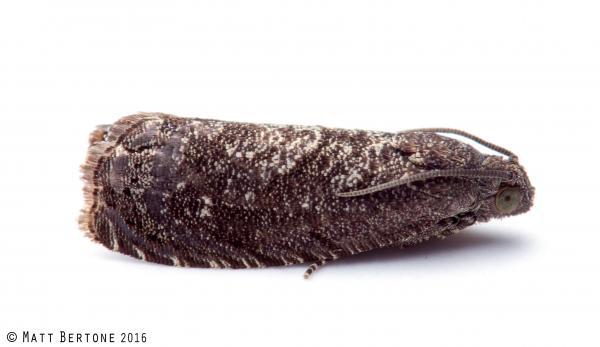
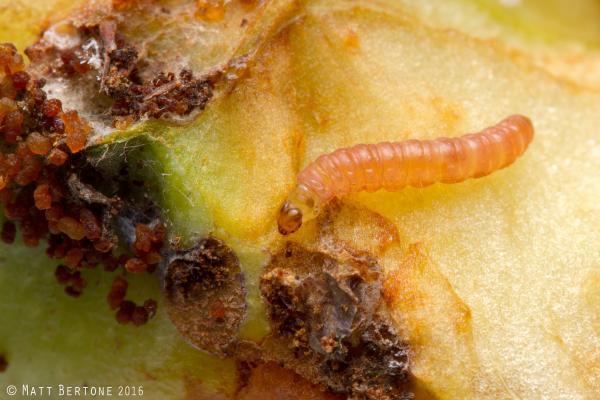
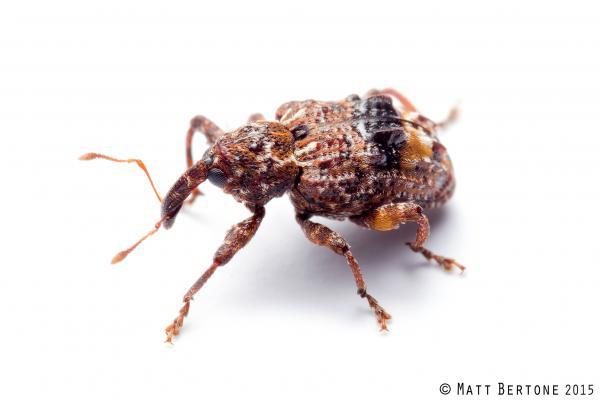
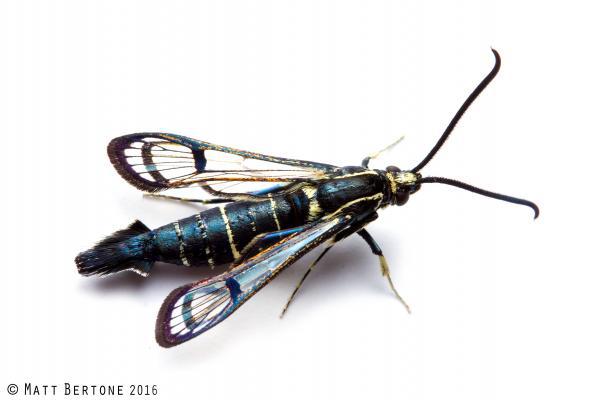
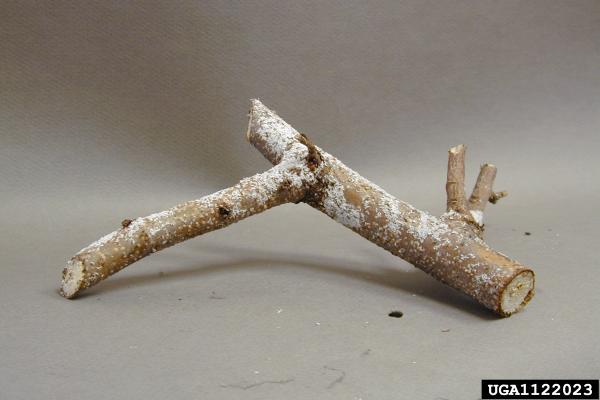
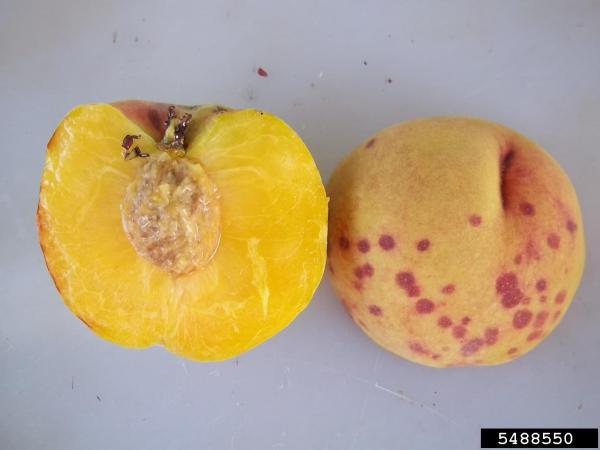
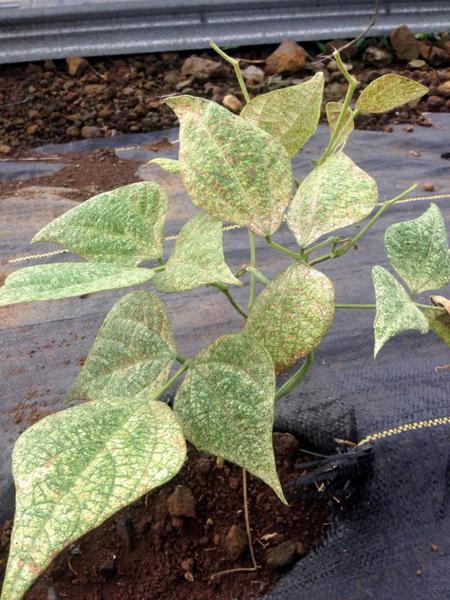
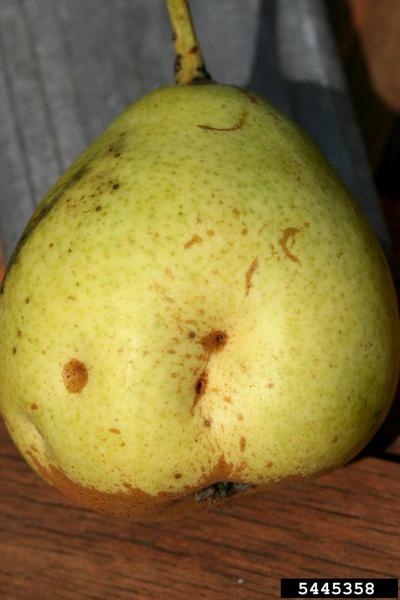
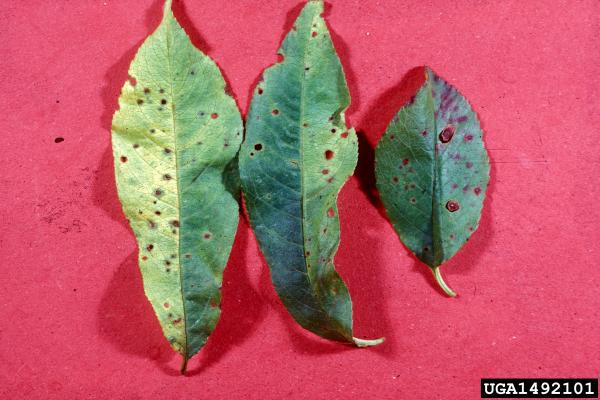
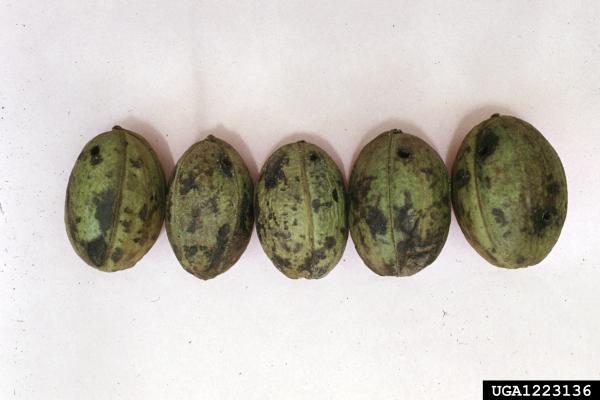
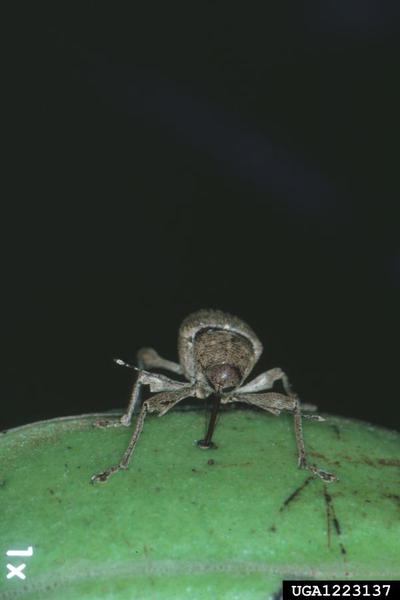
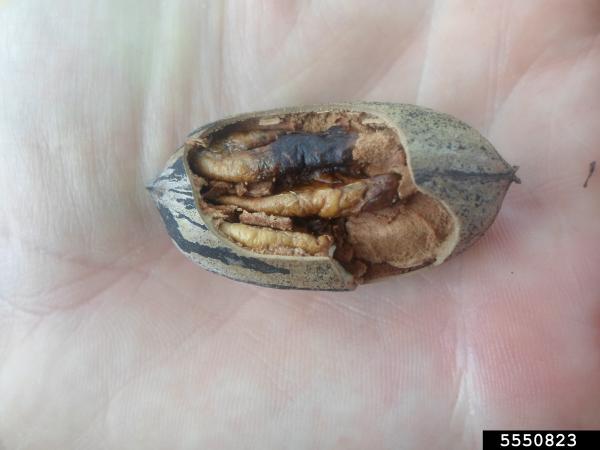
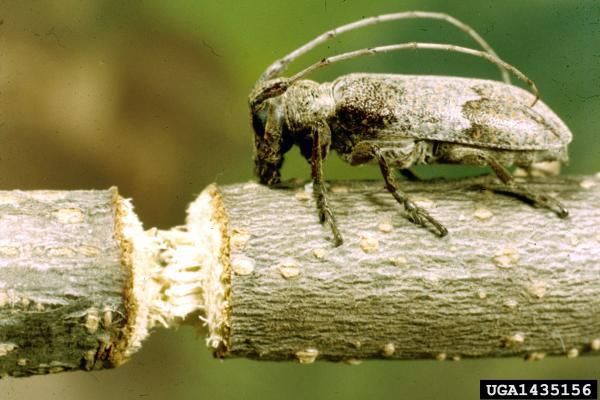
.jpg)

